Archive for the ‘Possums and Gliders’ Category
Saturday, May 4th, 2013
[The following article was written by Tigerquoll and first published on ^CanDoBetter.net under the title ‘Brushtail Possums are a destructive pest in NZ – but is persevering with a backyard fur trade New Zealand’s ethical solution? Comments have been included.]
.
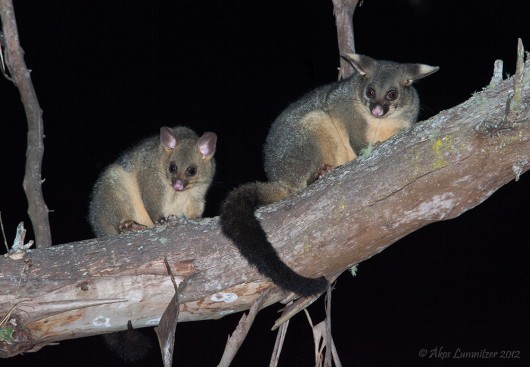 Australia’s native Brushtailed Possum (Trichosurus vulpecula)
Click image to enlarge
Australia’s native Brushtailed Possum (Trichosurus vulpecula)
Click image to enlarge
[Image courtesy of Ákos Lumnitzer, ^http://amatteroflight.com/]
.
Australian Possums were introduced by New Zealanders to New Zealand in 1837
.
Brushtail Possums are native to Australia but a destructive introduced pest in New Zealand.
Yet is ‘Possum Merino‘ New Zealand’s ethical solution to its pest control or really just perpetuating a backward 1837 Fur Trade?
After all, it was New Zealander colonists in 1837 who sailed to Tasmania and to the east coast of Australia to poach Australian Brushtailed Possums and export and introduce them into defenceless New Zealand so as to establish a selfish fur trade. Who else is to blame?
So thanks to colonists, Brushtail Possums have unquestioningly since become a destructive colonising pest to New Zealand, just like so many others –
- Stoats
- Domestic cats
- Chamois
- Deer
- Ferrets
- Goats
- European hedgehogs
- Horses
- House mice
- Rabbits
- Rats
- Himalayan tahrs
- Wallabies (also poached from Australia by colonial New Zealanders)
- Weasels
- and arguably all non-Maori humans.
.
Introduced New Zealanders and their descendants professing natural New Zealand justice need to frankly pull their imposive self-righteous heads in.
.
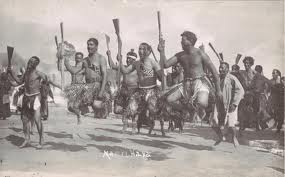 A Maori traditional Haka A Maori traditional Haka
.
Probably the most relevant and credible authority on this centuries old problem of human introduced possums into New Zealand should be New Zealand’s own Department of Conservation (DOC). Yet DOC has no watchdog to vet its possum control policy, to evaluate the ethics of its indiscriminate aerial 1080 poison programmes, its budget decision making, its pest control methods.
New Zealand Department of Conservation is its own master, answerable to no-one. It dictates possum control and culling only on the basis of it deeming it administratively cost effective and efficient. Perhaps this is a leftover culture of Rogernomics applied to lean management of New Zealand’s ecology. On the New Zealand Department of Conservation website, the possum problem in New Zealand is clearly explained. An issue this author accepts as a serious ecological problem facing New Zealand.
Under the heading 3.3 Possum Damage to Native (NZ) Forests, the possum problem in NZ is explained as follows:
“Over the past 50 years, possums have emerged as one of the major threats to the health and wellbeing of forests throughout New Zealand. Many of these impacts are subtle and indirectly affect native birds and insects. Possums cause damage to native forests from the ground level to the canopy where, by concentrating on individual plants of their preferred species, they can kill trees by defoliation over several years. Possums preferentially feed on some of the tall canopy species – such as tawa, northern rata, kohekohe, southern rata, kamahi, pohutukawa and 20 Hall’s totara – while ignoring others. They also prefer some of the smaller trees, such as tree fuchsia and wineberry, along with mistletoe, forest herbs, some ferns, and a number of endangered shrubs.
It is difficult to imagine that possums, which are about the size of a large cat, can kill individual trees that have dominated forest landscapes for centuries before possums were released here. But when the number of possums is combined with the total amount each one eats, their impact on their preferred species is easier to appreciate. The amount of food consumed by an adult possum each night is about 160 gm of digestible dry matter. There are probably tens of millions of possums living in native forests. In total, possums are consuming thousands of tonnes of vegetation each night.
Possum populations have now modified many New Zealand forests. The rate and extent of these changes vary widely between different types of forests. Beech forests are the least affected, but in the vulnerable southern rata-kamahi forests of Westland many valleys have lost between 20% to 50% or more, of their canopy trees. In severe situations, possums have caused the complete collapse of the canopy within 15–20 years of their arrival. Tall forest is then replaced by shrublands.
While the impact of possums is most visible and dramatic when it involves canopy trees, their most pervasive impacts are often less visible. Possums have recently been described as “reluctant folivores”. This means that possums prefer to eat other forest foods than the leaves of trees. Flowers, fruit, leaf buds, fungi and insects are all highly favoured. The consumption of these foods has the largest impact on the healthy functioning of forests and the animals that rely on them. The consequences of possums concentrating on these foods are:
.
Loss of Flowers:
.
- Preventing the formation of seeds
- Removing nectar sources for birds and bats
- Reducing the food supply for many invertebrates
- Nectar loss reducing food supplies for chicks, e.g. kaka, tui.
.
Loss of Fruits:
.
- Reducing food supplies for birds and invertebrates
- Affecting bird breeding condition and nesting success, e.g. kakapo, kereru
- Reducing or eliminating seed dispersal
- Reducing the regenerative capacity of native plants.
.
Loss of New Shoots:
.
- Reducing the ability of plants to overcome leaf loss from weather and seasonal patterns
- Reducing numbers of new leaves, jeopardising plant health.>>
.
New Zealand Department of Conservation also states that “the damage to native forests can be seen all too clearly in many areas. Possums ignore old leaves and select the best new growth. In some areas they have eaten whole canopies of indigenous Rata, Totara, Titoki, Kowhai and Kohekohe.
Possums also compete with New Zealand native birds for habitat and for food such as insects and berries. They also disturb nesting birds, eat their eggs and chicks and may impact on native land snails.
New Zealand Department of Conservation cites examples of natural vegetation damaged by possums at Pirongia Forest Park, and the upper canopy of NZ native forest trees on the slopes of Mt Karioi, south of Raglan.”
So, assuming New Zealand Department of Conservation’s account is correct, the introduced Brushtail possum is a serious pest to New Zealand (NZ) native ecology.
But what to do about it?
.
What should Australia responsibly do – repatriate back its possums?
.
It’s long overdue for the New Zealand Government to get serious about its self-caused possum problem and look to resolve it once and for all for the benefit of the New Zealand ecology and the possums themselves. It needs to look at the root causes.
The possum was introduced to New Zealand by New Zealand profiteering colonists.
 Many New Zealanders conveniently forget:
It is not the possum’s fault it is in New Zealand. Many New Zealanders conveniently forget:
It is not the possum’s fault it is in New Zealand.
.
However, pouring $80 million a year of New Zealand taxpayers money into cruel indiscrimate aerial baiting is not working. If it was the possum problem would be reducing and there would not be a burgeoning possum fur trade.
Instead of perpetuating a 19th Century immoral fur trade, in order to control possums and other introduced pests in New Zealand, one option is to catch and relocate them back to their native home country habitat. This may seem highly expensive and labour intensive and far fetched, but what other option is both humane and effective?
It’s not the possums’ fault. New Zealand colonists introduced them from Australia to New Zealand. The problem is an inherited inter-generational problem caused by New Zealand colonists. It shoud be solved by their descendants, not perpetuated as a fur trade.
Acknowledging the possum in NZ is an introduced pest, the question in this case is whether the possums in New Zealand are being killed humanely and whether this is being effectively monitored by a government watchdog worthy of the public trust?
By killing possums, humans have a moral obligation to do it humanely. Possums like all animals are sentient beings and so feel pain, fear and suffering.
.
New Zealand sprays 1080 poison over its native forests
.
New Zealand Department of Conservation’s official choice of death is aerial baiting with the the literally cheap and very nasty poison ‘1080’ (‘ten-eighty’, or Sodium Monofluroacetate).
New Zealand Department of Conservation’s argues it is humane and safe.
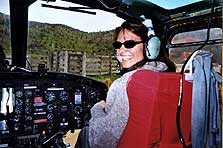 Heading out to drop 1080 poison across NZ forests
(a smiling assassin) Heading out to drop 1080 poison across NZ forests
(a smiling assassin)
.
But The World League for Protection of Animals argues otherwise and offers the following explanation about ‘1080’ poison.
“1080 (sodium monofluroacetate) is a cruel and indiscriminate poison used to ‘remove’ unwanted populations of animals.
Banned in most countries, 1080 is still used liberally throughout Australia to control so-called ‘pest’ species, and reduce ‘browsing damage’ caused by native animals on private land.
1080 poison is a slow killer. When ingested (usually through baited food) the animal suffers a prolonged and horrific death. Herbivores take the longest to die – up to 44 hours, while carnivores can take up to 21 hours before finally succumbing to final effects of the poison. The speed of death is dependent on the rate of the animals metabolism.
.
1080 Poison Causes a Slow & Horrific Death
.
Witnesses to the deaths of herbivorous animals, such as macropods, have reported:
“Affected wallabies were sometimes observed sitting hunched up, with heads held shakily just above the ground. Generally they appeared non-alert and ‘sick’, with shivering or shaking forelimbs and unsteady balance. Most individuals then experience convulsions, falling to the ground and lying on their backs and sides, kicking and making running motions with their hind legs before dying. Many individuals also ejaculated shortly before death, and, with others, exuded a white froth from their nostrils and mouth.”
Carnivorous animals such as dingoes, dogs, foxes, and cats become very agitated, as they tremble, convulse and vomit.
.
Animal symptoms of eating 1080 poison:
.
“…restlessness; increased hyperexcitability; incontinence or diarrhea; excessive salivation; abrupt bouts of vocalization; and finally sudden bursts of violent activity.
All affected animals then fall to the ground in teranic seizure, with hind limbs or all four limbs and sometimes the tail extended rigidly from their arched bodies. At other times the front feet are clasped together, clenched or used to scratch frantically at the cage walls.
This tonic phase is then followed by a clonic phase in which the animals lie and kick or ‘paddle’ with the front legs and sometimes squeal, crawl around and bite at objects. During this phase the tongue and penis may be extruded, their eyes rolled back so that only the whites show and the teeth ground together. Breathing is rapid but laboured, with some animals partly choking on their saliva. Finally such individuals begin to relax, breathing more slowly and shallowly and lying quietly with the hind legs still extended but apparently semiparalysed”.
From the above descriptions, it is without question that 1080 poison inflicts great pain and suffering on affected animals. Aside from the physical pain endured over the many hours before death, the terror, fear and anxiety felt by these animals is unimaginable.”>>
.
.
The main reason why the New Zealand Department of Conservation uses 1080 is simply because it is cheap. Dropping it it indiscriminately by air is efficient and convenient.
Whereas setting caged traps for possums is expensive. Using poisons that act faster that 1080, such as cyanide is also more expensive.
So the New Zealand Department of Conservation’s key justification for its use of 1080 is one of cost.
It also justifies using 1080 because other countries use it for pest control, like Australian & the USA , so implying that 1080 must therefore be ethically acceptable. But New Zealanders should make up their own mind and should recall that both the USA and Australia used Agent Orange in The Vietnam War.
The Department of Conservation also justifies 1080 use because NZ has no natural mammals so the risk to non-target species are nil. But this claim is FACTUALLY INCORRECT!
On 30 July 2008, The Dominion Post reported that after a Department of Conservation aerial drop of 1080, seven kea had died at Fox Glacier from eating the 1080 poison, wiping out almost half a group of the endangered and protected parrot being monitored by the Conservation Department. DOC came up with excuses, but with such an endangered bird with so few kea left on the planet, DOC cannot afford to gamble with the kea’s extinction.
Anti-1080 campaigner Mike Bennett said the kea deaths were the tip of the iceberg. “These are only the monitored ones. If that percentage is extrapolated for the entire population, that doesn’t leave many for the next drop” and has called for a ban on all aerial 1080 drops in alpine areas.
.
New Zealand is not reducing possum numbers, just perpetuating its 1837 Fur Trade
.
New Zealand’s own backyard fur trade has seen a recent resergence since the 1830s when New Zealand hunters first introduced the possum to the wilds of New Zealand. the traditional method of possum slaugher is by trapping. For nearly two centuries the cruel ‘gin trap’ with serrated jaws was used. Although the trapping laws have recently banned gin traps, leg-hold traps remain the method of choice for trappers.
According to the NZ Lifestyle Block website:
“Leg-hold traps such as the ‘Lanes Ace’ or ‘Gin Trap’ have been widely used for possum and rabbit control for many years. The gin trap is more than 10.5 cm across its open jaws, which are serrated, and it is powered by a flat metal spring, so it’s a “size 1½ long spring” trap.
Traps of size 1½ or larger are more likely than the smaller traps to snap shut across the belly or chest of an animal. Although larger traps have been banned, traps of size 1½ can still be used if they are powered by double-coil springs. From January 2011 they will have to be padded, and you can’t modify them yourself to make them padded…
.
Why are these traps cruel?
.
When the gin trap snaps shut on its victim, the teeth bite into the skin and can cause a lot of trauma and no doubt agonizing pain.
All leg-hold traps are indiscriminate about what they catch. If they are set in possum tracks or runs it’s more likely than not that any catch will be a possum, but it might also be a cat… rat, bird or small dog. Large dogs can sometimes pull out of them but they may be injured in the process.
.
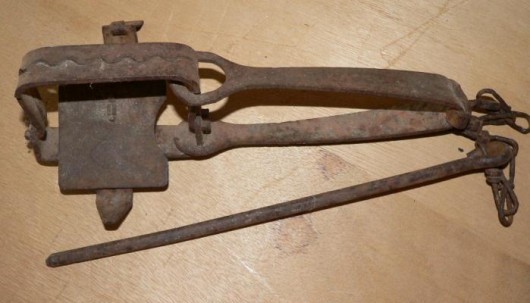 Possum Trappers preferred weapon of choice: the ‘Lanes Ace’ or ‘Gin Trap’
Widely used for possum trappers in New Zealand for many years. Possum Trappers preferred weapon of choice: the ‘Lanes Ace’ or ‘Gin Trap’
Widely used for possum trappers in New Zealand for many years.
.
Icing sugar or flour around traps is sometimes used to attract possums, but if used beneath a trap the animal is likely to be trapped by its snout or head.
.
What are the alternative leg-hold traps?
.
In New Zealand it is still legal to use size 1 leg-hold traps such as the Victor within the restrictions on location and setting described above. It is smaller than the gin trap and doesn’t have serrated jaws.
The ‘Victor No 1‘ can be bought with cushioned inserts that make it more humane. It tends to cause less frequent and less severe injuries than the gin trap and larger leg-hold traps, but it can still cause severe bruising, and trapped animals will sometimes cause themselves severe injuries in their struggle to get free.
Trappers favour the Victor No 1 because it is compact, light and relatively efficient. The changes in the legislation mean that it is likely to become even more popular.
There’s good advice for landowners on the most humane way to use leg-hold traps and their alternatives on the National Possum Control Agencies website (www.npca.org.nz), and not just for possums but for ferrets too.”>>
.
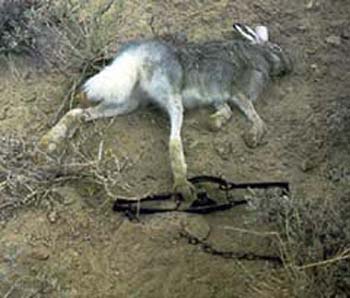 Rabbit caught and dead in Lanes Ace Trap.
The steel jaws of the trap break the rabbit’s leg and it dies of pain and suffering over days.
These are used in New Zealand in the possum fur trade
[Image Source: ^http://www.animalwritings.com/archive/2004_08_01_blog_archive.asp] Rabbit caught and dead in Lanes Ace Trap.
The steel jaws of the trap break the rabbit’s leg and it dies of pain and suffering over days.
These are used in New Zealand in the possum fur trade
[Image Source: ^http://www.animalwritings.com/archive/2004_08_01_blog_archive.asp]
.
Typical traps used in New Zealand for possums are the flat jaw/leg hold’ type such as the ‘Bushmaster‘. While recognised as more humane that the serrated jaw ‘gin trap’, it can still cause suffering to a trapped animal, and of course is indiscriminate.
The Hamilton City Council on the North Island prohibits the use of leg-hold traps such as gin traps in residential areas and within 150 metres of dwellings or places where there are likely to be pets. It instead recommends Cage Traps and Timms Traps for possums and other feral animals.
.
New Zealand’s 1837 Possum Fur Trade now globally profitable!
.

The justification spin:
.
<<…Possums were introduced into New Zealand by the caring, sharing Aussie cousins in the 1870s, to get the fur trade going. [Ed: How do we know it was not New Zealand colonists returning to New Zealand that introduced the possum?] Unfortunately what the possums did is have a fabulous time in the New Zealand climate, and aided by the decline in the fur industry, increased their numbers to over 70 million today.
Possums are a pest in New Zealand. Not only do they manage to consume approximately 21,000 tonnes of vegetation every night, but they are also killing native birds, and generally upsetting the ecological balance. Many native trees, plants and birds, including the Kiwi, are under threat of extinction because the possum is destroying their habitat. A possum will visit the same tree night after night and eat away until the point where the tree cannot recover. It has also now been confirmed that possums will eat both the eggs and chicks of the native Kiwi and Kokako. Where Australian plants have their own defences against the possum, NZ plants do not. The possum has no predator in NZ. Regular culling has been carried out under government supervision since the 1940s and it is estimated to cost around £20 million each year.
Very interestingly, the World Wide Fund for Nature does acknowledge that possums need to be controlled.
Although the culling began in the 1940s, it has only been in the last 30 years that good use was made of the resulting resource.
Kiwis (the human ones!), known for their ability to fix anything with a piece of no. 8 fencing wire, are a bit of an ingenious lot. They’ve managed to turn the pest into an export commodity. Possum meat goes to Asia (have you eaten ‘Kiwi Bear’?!), and the pelt is used for any number of commodities as it has properties that lend itself to both warmth and protection. New Zealand is the only place in the world where possum fur can be harvested.>>
[Source: ^http://www.kiwikate.co.uk/]
.
Ed: The British colonial New Zealander’s cultural inferiority complex with nearby Australia is manifested in a hatred for Australian Possums.
Proud in denial, the fact is that colonial New Zealanders in 1837 chose to sail to Australia to capture the species and voluntarily introduce the Brushtailed Possum to New Zealand.
In 1837, Australian possums didn’t want to go to New Zealand. Colonial Australians at the time probably took no interest in a few New Zealanders taking wildlife for their own gain. Maoris atthe time probably were unaware, had no say then anyway, but would have challenged the introduction had they been duly informed.
Kiwi Kate’s reference to “caring, sharing Aussie cousins” sadly reflects bigotry out of her misinformed upbringing.
.
Use of Feratox (cyanide) Poison?
.
According to the Lifestyle Block website NZ veterinarian Dr Marjorie Orr, BVM&S, PhD, BA and lifestyle farmer on , the most humane method of possum control is to use Feratox capsules, which is an encapsulated cyanide.
The preferred baiting method is to use these in specially designed “bait stations or sachets stapled to trees, baited with peanut butter (possums like it and dogs and birds usually don’t). The pest control companies that put out the poison will usually on request remove the sachets after a few days, and this helps reduce the risk of accidental poisoning of other animals. The poison in the capsules, cyanide, is quickly destroyed on exposure to air. Death is quick and relatively stress-free and there is no risk of secondary poisoning of dogs that scavenge poisoned carcases.”
The test of humane killing must be conditional on the absence of pain and stress caused to the animal and that the killing be very quick.
But the killing of a native animal is wrong, despite it being introduced by humans. It has become a convenient excuse for New Zealanders to kill possums. Possum control by either DOC or the fur trade is not effective and in both cases the chosen methods are inhumane.
.
New Zealand’s possum problem has been allowed to escalate into an immoral industry for profiteers.
The New Zealand Government is responsible for failing to deal with the problem effectively and humanely.
It has perpetuated an immoral fur trade that begun in the 19th Century, and at the same time allowed much irreversible harm to be caused to New Zealand’s fragile ecology.
.
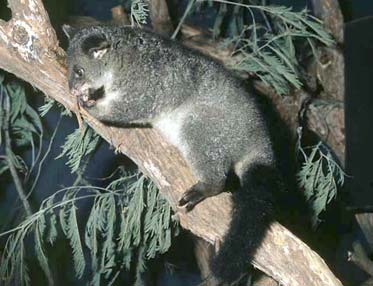 . .
Possum Comments:
.
‘The legacy of human ignorance and delinquency is enormous’
(Vivienne 20091205) :
.
<<Research has begun recently into biocontrol of brushtail possums as the only long-term, cost-effective solution to the possum problem in New Zealand, where possums cause significant damage to native forests, threaten populations of native plants and animals, and infect cattle and deer with bovine tuberculosis.
see the abstract for the CSIRO report
Immunocontraception is a humane means of controlling possums with wide public acceptance.
Although several studies have investigated or modelled its demographic consequences, there have been few studies of the possible effects of the presence of sterile females on local males.
Implications for biological control
Cynanide kills more quickly than 1080, but no less violently. Researchers have called this death humane!
Food is provided in a feeder for a few of days to lull the animals into a false sense of security. Then their trust is betrayed with the food being replaced with encapsulated cyanide pellets. The animals die within metres of the feeding station.
Possums are endearing little animals and what they suffer is horrific! The legacy of human ignorance and delinquency is enormous! Our colonial attitudes continue to haunt us today, with species continually threatened and made extinct by human expansion and self-interests.>>
.
‘Fertility controls the only longterm option for NZ possums’
(Pat, 20091207)
.
<<Fertility controls the only longterm option for control NZ possums, anything else is only a bandaid. We have the technology to do this, it only needs some more research and it could proceed. Its crazy to allow unwanted animals to breed out of control, then cruelly kill them, 1080 or not.
40 years ago we put a man on the moon….and then bought him safely back….and yet we cant humanely solve the NZ possum problem? I dont believe it! The NZ DOC appears to be as incomptent and as useless as our own Australian wildlife bureacracies.>>
.
‘NZ possums’
(Possum lover, 20091208):
.
<<As always- the real pest is the human.
However, I can see from this article that the New Zealand environment would be better off without the Brush Tail Possum. Apart from the cruelty a possum fur industry makes little sense as it would rely on a sustainable population of the animals – and this would mean continued deleterious effects on the environment. Bringing millions of animals back to Australia seems extremely impractical as I think there would be a lack of habitat and how would one round them all up? Human population growth is continually robbing possums of habitat in Australia even though they are very good at sharing with humans.
The poisoning and trapping options are not acceptable at all- and anyway — it seems clear that whatever they are doing in NZ to reduce the population of possums — they are not being effective, anyway !
(As I write this I hear on radio National that a few hundred camels will be shot in central or northern Australia because their numbers have got out of hand and they come close to human settlements looking for water. Who brought the camels to Australia? Who put them to work in opening up the centre of the continent.? Who abandoned them to the wild when they had served their purpose?)
Back to the possums- realistically it seems to me that it’s a choice of either accepting the possums and a changed environment (just as humans changed the ecosystem by extinguishing the moa) or making a concerted effort to humanely totally eradicate the animals from NZ. There is no point in partially reducing the population as more possums will fill the available habitat.
More info on the practicalities of sterilisation would useful. If only there was a measure of the suffering that humans inflict on each other and on other animals. All other suffering on the planet would be dwarfed by this measure.>>
.
‘New Zealand complacent about its wildlife’
(Tigerquoll, 20091208):
.
Yes, I agree the real pest is the human. Yes, I agree the New Zealand environment would be better off without the Australian Brushtail Possum.
To round up and try repatriating the many Brushtail possums in New Zealand back to Australia would be extremely impractical. Do we know the numbers and their geographic concentrations? Assuming the possum are on both islands, can one island be targeted first?
Where would they be repatriate to? Possums are territorial mammals. Even in Australia native wildlife experts claim that it is not possible to relocate possums, which poses problems for both possums already in Australia and for the reintroduced possums. The cost exercise would highlight the extent of the problem and the real costs of New Zealand having neglected a serious pest invasion for nearly two centuries. This reinforces the scale and complexity of introduce pest problems when left ignored.
But what is the alternative that is both ethical and effective?
The sterilisation science sounds encouraging, yet even then ‘immunosterilization’ as it is formally labelled has questions about efficacy of fertility control, the means for delivering antigens. Then there are the potential legal and social concerns that relate to the possible future use of antigens.
But I do recommend this is where the $80 million of New Zealand taxpayers money should be diverted instead of indiscriminate 1080 drops by helicopter. Question is why has the New Zealand Government become so complacent about seeking a humane and effective permanent solution?
Australia’s feral camel problem in central Australia is comparable to New Zealand’s possum problem. I understand they will be shot, which suggests a faster clean kill (so long as the shooter is a trained marksman with appropriate knowledge of camel to effect a single round quick kill, rather than some recreational shooter), but what to do with the carcasses? Is shooting humane and ethical? Is shooting the only answer, or is it just the cheapest and nastiest quick fix coming from some staffers desk? Could these camels not be herded and shipped live back to their native country in the Middle East or North Africa or from wherever their ancestors originated?
Question again is, why has the Australian Government also ignored the feral camel problem for so long to allow it to build to becoming so numerous and widespread?
I am not in favour of New Zealand ignoring its possum problem, because such a defeatist stance would only perpetuate further destruction of New Zealand’s forest ecology and to inevitable local extinctions of native flora and fauna. It would also encourage the perpetuation of New Zealand’s immoral fur trade, which is no different to Canadians commercially clubbing fur seals.
Is the New Zealand Government just as complacent with its Biosecurity? Less than a month ago Queensland cane toad was found in an Australian tourist’s hiking boot in Queenstown on the South Island. All it needed was a mate and it would have been off and breeding. “A MAF biosecurity spokeswoman confirmed the toad arrived last Tuesday but was not spotted.”>>
[SOURCE: ‘Cane toad evades Kiwi airport biosecurity’ , by Tamara McLean, AAP, 20091126. Read More: ‘Cane toad catches ride to Queenstown’, by Will Hine, Fairfax NZ, ^http://www.stuff.co.nz/national/3098565/Cane-toad-catches-ride-to-Queenstown]
.
.
Footnote:
.
It makes it hard for New Zealand’s Department of Conservation to act to properly address New Zealand’s chronic feral possum infestation, when the government sacks 140 of DOC’s staff demanding it cut $8.7 million in operational expenditure…
.
‘DOC cuts 140 jobs’
[Source: ‘DOC cuts 140 jobs’, 20130326, by Michael Daly, Fairfax NZ, ^http://www.stuff.co.nz/national/politics/8471779/DOC-cuts-140-jobs]
.
<<The Department of Conservation (DOC) has announced plans to cut about 140 largely regional management and administration positions. The job losses are part of a reorganisation under which DOC’s existing 11 regional conservancy boundaries will be replaced with six new regions.
DOC director-general Al Morrison says the new structure would maintain DOC’s own conservation delivery work while setting the department up to work more effectively with external partners.
“DOC must adapt if it is going to meet the conservation challenges that New Zealand faces – even if you doubled DOC’s budget tomorrow we would still be going ahead with this proposal.”
DOC would continue to operate out of the same number of offices as now with more than 1200 operational staff, Morrison said. About 118 management and administrative positions would go as a result of the new flatter organisation. A further 22 operational roles would be cut through efficiencies gained by setting up new support hubs for activities such as asset management, inspections and work planning.
The size of the proposal was aimed at ensuring DOC met its $8.7 million savings targets and continued to meet its current delivery work.
.
[Ed: This should pay for John Key’s $7 million funding to Immigration New Zealand to “increase visitor numbers by smoothing processes at the border” ^http://www.nzherald.co.nz/business/news/article.cfm?c_id=3&objectid=10878911].
.
A conservation partnerships group would be set up focused on working with community groups, iwi, local authorities, private landowners and businesses to attract more resources to conservation, Morrison said. Recreational and natural heritage field work would be the responsibility of a conservation services group.
Consultation with staff about the proposals had started and no final decisions would be made until staff feedback had been considered. Any changes would not take effect for some months.
“I acknowledge this will mean a difficult period for many staff and we will be making every effort to ease the impact of these proposals,” Morrison said.
A freeze on hiring new staff had been in place and about 160 positions were filled with temporary staff. “It is simply too early to say what impact these proposals will have on individuals – we will look at all options such as redeployment and relocation to minimise redundancies.”
.
‘GAPING HOLES’
The Green Party earlier today predicted the proposal was to axe 140 jobs.
“With the department already pared to the bone these latest cuts will mean less protection of our special native plants and wildlife,” Green Party conservation spokesperson Eugenie Sage said. “DOC manages more than a third of the land in New Zealand and the argument that volunteers and a few corporate sponsors will fill in the gaping hole these cuts and continued pressure on department spending create is nonsense.
“National is trying to turn DOC into a corporate entity focused on stakeholders and corporate sponsorship at the expense of its key role to to protect and preserve native plants and animals,” Sage said. “This National Government is toxic to the environment and is polluting, digging up and selling our children’s future.”
Prime Minister John Key this morning said the department was over-staffed with middle management and bureaucracy. “What you have seen is, over the good times under a Labour government a big buildup in kind of the middle management and bureaucracy, and in the leaner, harder times where the Government doesn’t have a lot of money to throw around, we don’t have that much money,” he said.
.
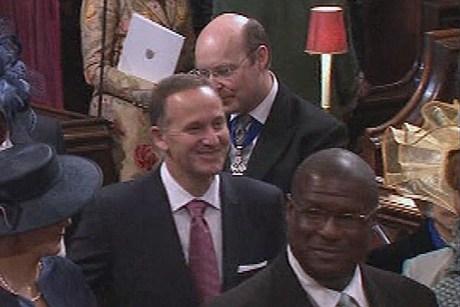 King of Overseas Holidays, John Key,
He flew first class with his wife to attend a foreign royal wedding on 20110429
Here he’s looking resplendent in his bespoke $6,000 suit washed with pounamu.
Total cost of Key Junket which did nothing for New Zealand, NZ$200,000? King of Overseas Holidays, John Key,
He flew first class with his wife to attend a foreign royal wedding on 20110429
Here he’s looking resplendent in his bespoke $6,000 suit washed with pounamu.
Total cost of Key Junket which did nothing for New Zealand, NZ$200,000?
.
.
“Government agencies now needed to be leaner, and more efficient”, Key said. He compared the restructuring to a similar exercise at Telecom, which was expected to axe hundreds of jobs this year.
“If you go and look at what is happening at Telecom at the moment, on a different scale … but no-one is arguing that the chief executive isn’t doing the right thing trying to make sure that organisation is leaner and more efficient,” he said. The Government had a responsibility to taxpayers, he said.
“The management at DOC have a responsibility to ensure that their resources are directed in the right place and that is what you are going to see today,” Key said>>
.
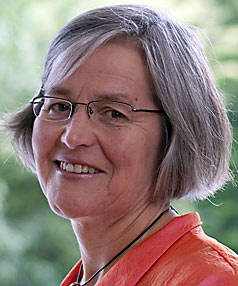 Ms Eugenie Sage
Green Party of Aotearoa representative: Ms Eugenie Sage
Green Party of Aotearoa representative:
.
“National is trying to turn DOC into a corporate entity focused on stakeholders and corporate sponsorship at the expense of its key role to protect and preserve native plants and animals”.
.
Tags: 1080 poison, Brushtailed Possum, Cage Traps, cyanide baiting, Feratox, Gin Trap, KiwiKate, Lanes Ace Trap, New Zealand, New Zealand Department of Conservation, NZ DOC overstaffed, NZ Fur Trade, PM John Key, Possum Damage to Native (NZ) Forests, Possum Merino, World League for Protection of Animals
Posted in Possums and Gliders, Threats from Poaching and Poisoning | Comments Off on Brushtail Possum a NZ backyard Fur Trade
Add this post to Del.icio.us - Digg
Sunday, September 2nd, 2012
[The following article was written by Tigerquoll and initially published under the title ‘Anthology of State Serial Rape of Bermagui’s Spotted Gum Forest Habitat‘, on ^CanDoBetter.net 20100216]
 Click this image to play music
then click back to this article as it plays Click this image to play music
then click back to this article as it plays
.
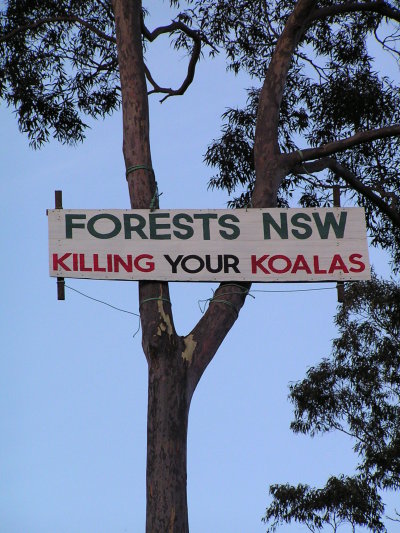 Nothing less than the Australian Government can be trusted to protect vital Koala Habitat.
Lesser smaller-minded state governments only see Koala Habitat as a logging and tourism resource.
Small minded politicians like Kristina Keneally can never be trusted with national treasures
Nothing less than the Australian Government can be trusted to protect vital Koala Habitat.
Lesser smaller-minded state governments only see Koala Habitat as a logging and tourism resource.
Small minded politicians like Kristina Keneally can never be trusted with national treasures
.
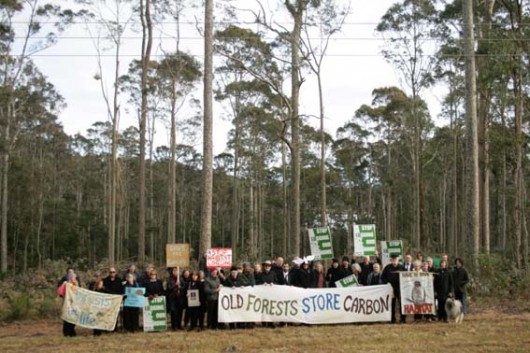 Bermagui’s Spotted Gums
..the local Narooma Community in their defence against ‘Forest NSW’ (the Forest-Fiddling loggers)
Bermagui’s Spotted Gums
..the local Narooma Community in their defence against ‘Forest NSW’ (the Forest-Fiddling loggers)
.
 Forest-Fiddling Logger driving his Spotted Gum spoils truck
Forest-Fiddling Logger driving his Spotted Gum spoils truck
.
 But Eucalyptus maculata is a tree, not a floor But Eucalyptus maculata is a tree, not a floor
.
In terms of Australia’s iconic ‘Spotted Gum’, the word “spotted” refers to the soft mottled colour caused by weathering of the outer tree as it sheds elliptical strips of bark.
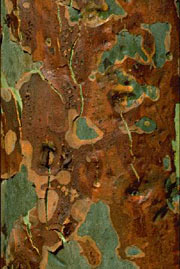 Spotted Gum bark Spotted Gum bark
.
This colour varies from pale greybrowns and soft creams to a rich chocolate brown. A very tough timber, its frequent wavy grain can produce an attractive and highly valued fiddleback effect. [Source: Boral website, ^http://www.boral.com.au/timberflooring/timber_species_-_spotted_gum.asp]
.
 Build something great, but don’t destroy something great in the process
– like Koala Spotted Gum Forests!
Invest in Boral and you invest in Koala extinction
Build something great, but don’t destroy something great in the process
– like Koala Spotted Gum Forests!
Invest in Boral and you invest in Koala extinction
.
About 380km south of Sydney lies what NSW Tourism labels the beautiful ‘Sapphire Coast’ with the popular seaside town of Bermagui.
Less than 3km north of Bermagui heading north along Bermagui-Cobargo Road and up the Bermagui River estuary is the Bermagui State Forest – a label by the NSW Department of Primary Industry (DPI) given to magnificent Spotted Gum forest.
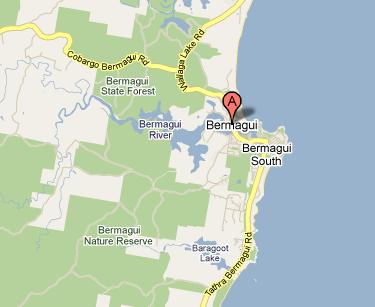 . .
This forest is vital habitat for threatened native fauna – the Yellow Bellied Gliders, Grey-Headed Flying Foxes, Tiger Quolls, Sooty Owls, Sea Eagles, Possums and Australia’s iconic Koala.
.
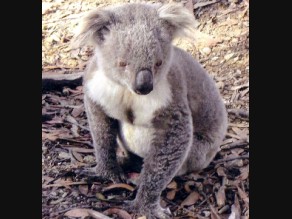 Koala in Bermagui’s Spotted Gum forest – a displaced landlord
Koala in Bermagui’s Spotted Gum forest – a displaced landlord
.
Australia’s iconic ‘Spotted Gums’
.
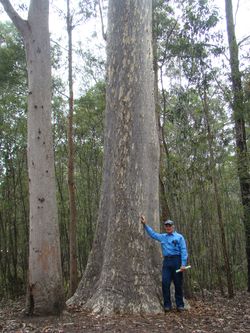 A mature iconic Spotted Gum Tree
About 400 years old, about 30 metres high
A mature iconic Spotted Gum Tree
About 400 years old, about 30 metres high
[Source: ‘A gum tree that saw Captain Cook and before’, ABC Radion interview of John Knight by Ian Campbell, 20100119,
Listen to Interview: ^http://blogs.abc.net.au/nsw/2010/01/a-gum-tree-that-saw-captain-cook-and-before.html]
.
Australia’s magnificent and unique Spotted Gums are naturally distributed in open forests along the hilly coastal corridor from south-east Queensland down through New South Wales and with a few isolated pockets in East Gippsland, Victoria. They belong to the botanical family ‘Myrtaceae’ and grow straight and tall up to 40 metres. Their height attracts roosting by Sea Eagles.
 Note the planet’s sole natural distribution of Spotted Gum Forests
They have become the target of corporate development simply because Spotted Gums prefer a mild temperate climate near the coast
..like Australia’s millions of breeding humans, and profiteering corporate developers
Note the planet’s sole natural distribution of Spotted Gum Forests
They have become the target of corporate development simply because Spotted Gums prefer a mild temperate climate near the coast
..like Australia’s millions of breeding humans, and profiteering corporate developers
.
Spotted gums flower once every two years and produce a rich pollen that attracts native birds such as Lorikeets and Yellow Tailed Cockatoos as wells as possums and flying foxes including the IUCN vulnerable listed Grey-Headed Flying Fox. [Source: Australian Native Plants Society, Corymbia maculata, ^http://asgap.org.au/c-mac.html]
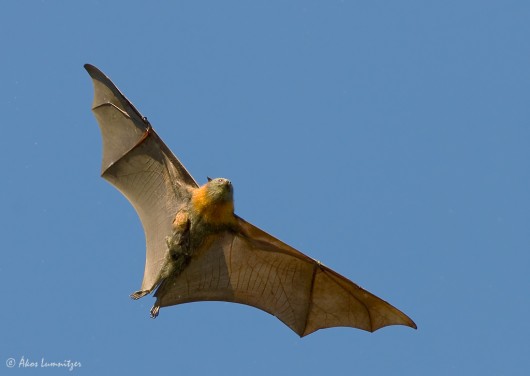 Grey-Headed Flying Fox (Pteropus poliocephalus)
The grey-headed flying-fox is listed as vulnerable to extinction under NSW and Australian legislation because of declining numbers and key threats such as habitat loss and urban conflict. Records indicate that grey-headed flying-foxes may once have numbered in the millions, but are now reduced to as few as 400,000. In the decade before listing, their population was estimated to have declined by 30%.
(Photo by Ákos Lumnitzer, ^http://amatteroflight.com/) Grey-Headed Flying Fox (Pteropus poliocephalus)
The grey-headed flying-fox is listed as vulnerable to extinction under NSW and Australian legislation because of declining numbers and key threats such as habitat loss and urban conflict. Records indicate that grey-headed flying-foxes may once have numbered in the millions, but are now reduced to as few as 400,000. In the decade before listing, their population was estimated to have declined by 30%.
(Photo by Ákos Lumnitzer, ^http://amatteroflight.com/)
.
Unlike the declaration of a ‘National Park’ which affords federal environmental protection to forest habitat, the State label of a ‘State Forest’ is a misnomer. A ‘State Forest’ is deemed a timber and woodchip resource for logging. The same public relations label is used across New South Wales, ACT, Victoria, Western Australia, Tasmania and Queensland. A State Forest is not treated as a forest for its natural habitat values, but rather as a logging coup on death row, that can be chainsawed at will anytime. Perhaps ‘Death Row Forest’ is a more apt label than speaking the State euphemism of ‘State Forests’.
And its public relations label logging as ‘harvesting’, a euphemism to belie the destructive reality.
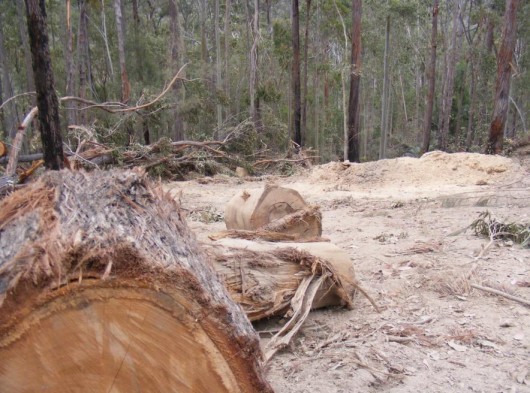 Bermagui State Forest after the loggers Bermagui State Forest after the loggers
.
The NSW Logging Offensive of 1988
.
On the back of a century of clear felling Bermagui State Forest was logged in the late 1980s. Then according to data from the ‘Bureau of Resource Science‘ (aka science graduates on the payroll of loggers), 148ha were “thinned” in 1996, and another 133ha that same year, then 94ha in 1999.
Typically 70% of the spotted gums goes to Boral’s mills in Narooma, Nowra and Batemans Bay as sawlogs to be processed into mainly flooring. The remainder end up as woodchips at Nippon Paper’s woodchip mill at Twofold Bay for export to Japan.
So Australia’s precious endangered habitat is being destroyed for house flooring and office paper. .
.
The NSW Logging Offensive of 2008
.
In October 2008, NSW Forests logged what it labeled “two compartments” in Bermagui State Forest north of Bermagui. It justified this under the infamous Eden Regional Forest Agreement (RFA). [>Read Agreement] [Source: ^http://www.daff.gov.au/__data/assets/pdf_file/0009/51021/nsw_rfa_eden.pdf]
This RFA is one of three established in 1999, in which the NSW Government relegated 15.1 million hectares of native forests across New South Wales for logging anytime. The usual public relations spin preceded the logging. Southern Region manager of Forests NSW, Ian Barnes.
It was at this time that Labor’s Minister for Primary Industries (Forests NSW) Ian MacDonald and Labor’s Minister for Police Tony Kelly started to use Dick Cheney tactics to push their weight around with protesters. The following questions to the NSW Legislative Council by NSW Greens Senator Lee Rhiannon on 28th October 2008, highlight the escalated use of law enforcement into a heavy handed riot squad:
.
Lee Rhiannon MLC:
“I direct my question to the Minister for Police. Did officers stationed at Batemans Bay police station in collaboration with Forests New South Wales hold a meeting at the Bermagui Country Club in September to warn locals associated with calling for forest protection not to protest when logging commenced in the Bermagui State Forest? Does the holding of this meeting reflect that Batemans Bay police officers have adopted a zero tolerance policing approach to forest protesters? Considering that since logging started in Bermagui State Forest on 27 October with a group of about 40 protesters gathered in the vicinity, about 15 police cars, more than 20 police, including members of the Public Order and Riot Squad, a mobile police command bus and two police rescue vans have been in attendance, will this level of policing continue for the coming six weeks of logging in this area? What is the anticipated cost of this operation?
.
Tony Kelly MLC (response):
“The Far South Coast Local Area Command of the New South Wales Police Force has been advised that New South Wales Forests is to commence logging compartments of Bermagui State Forest later this month. As in the past, protests are expected. As always, the New South Wales Police Force is committed to maintaining public order. For this reason, local police and various commands, including the Public Order and Riot Squad, Highway Patrol and Rescue Squad will join together to conduct an operation.
This operation will focus on ensuring the protection of persons engaged in lawful activities. Local police have made it clear that anyone engaging in unlawful or dangerous activity in or near the logging operation will have action taken against them. When offences continue and are considered dangerous, police will arrest and charge people as necessary. Police respect people’s rights to protest during these times; in no way are they looking to prevent lawful and peaceful protests. Police have asked anyone who intends to protest to contact them so that they can attempt to facilitate lawful activity, minimise disruption and focus on protecting the safety of everyone involved.”
.
[SOURCE: ‘Bermagui State Forest Logging Protests‘, Question raised NSW Legislative Council by The Greens Senator Lee Rhiannon, Parliament of New South Wales, Hansard, 20081028, ^http://www.parliament.nsw.gov.au/prod/parlment/hanstrans.nsf/V3ByKey/LC, 20081028, >Read Hansard Extract – go to page 10631, PDF, 344kb ]
.
The NSW Logging Offensive of Feb 2009
.
On Monday 2nd February 2009, logging operations resumed in the Bermagui State Forest after the summer holiday break period and continued for about two months.
Bruce Mathie and Sons is one of the prominent loggers in the area, but most timber finds its way either as saw logs to Boral for Spotted Gum flooring or else to Nippon Papers woodchip mill at Twofold Bay, Eden for export to Japan.
The forest eco-rapers ‘Forests NSW’ – bulldozed, chainsawed, logged, then left with their booty.
.
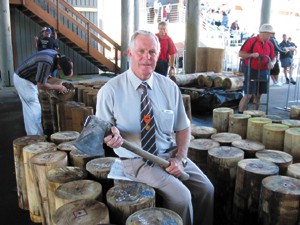 Kevin Mathie – 4th generation logger Kevin Mathie – 4th generation logger
.
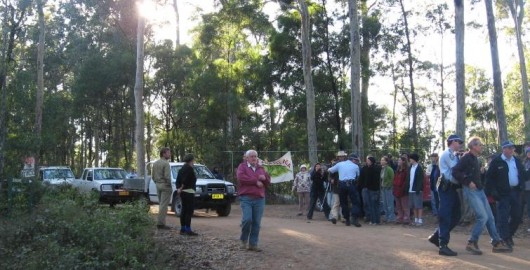 Logging contractor, Gil Mathie, in the middle of the picture at front (pink jumper)
More notably, this editor is saddened by bearing witness to a senior member
of the Bermagui community being arrested for conserving Spotted Gums and Koalas.
We love, we defend, we act for love.
Salute the man being arrested.
[Source: Local environmentalist, John Perkins, Gulaga Protest near Tilba on the NSW South Coast, 20070514]
Logging contractor, Gil Mathie, in the middle of the picture at front (pink jumper)
More notably, this editor is saddened by bearing witness to a senior member
of the Bermagui community being arrested for conserving Spotted Gums and Koalas.
We love, we defend, we act for love.
Salute the man being arrested.
[Source: Local environmentalist, John Perkins, Gulaga Protest near Tilba on the NSW South Coast, 20070514]
.
Labor’s Ian MacDonald’s Forestry Regulation of 2009
.
But rather that do the right thing by the Environment and by the Community and obey the law of the land, those in power The Labor Government’s (Forests NSW) forced changes to the law of the land to bloody well suit themselves. Arguably reminiscent of England’s King Henry VIII changing laws to accommodate his adultery, or Joh Bjelke-Petersen’s gerrymandering that secured his electoral hold on power.
In order to keep the cameras and local conservationist away from the loggers destructive practices, Forests NSW got the Minister to legislate an exclusion area around its logging with the public relations labeling of “mainly for safety reasons”.
On 1 September 2009, the NSW Forestry Regulation 2009 came into force making it illegal for anyone to trespass into areas marked by NSW Forests for logging. This has given Forests NSW absolute logging power with the police as its enforcement lackies.
Forests NSW Minister for Primary Industries, Ian MacDonald, tabled the Bill and it became law preventing democratic protests by people trying to save important habitat from destruction. It has given loggers free reign to log State Forests with impunity.
Under Part 3, Division 1, Clause 11 of this Regulation, a logger has legal authority to request anyone to leave a forestry area and this includes if that person “causes inconvenience.”
Under Clause 12, a logger can forcible remove anyone from a forestry area “who is causing annoyance or inconvenience.”
Surely such removal by a logger can be construed an assault under the Crimes Act? It is draconian. It is certainly an assault on Australians’ democratic right to protest. What was Ian MacDonald thinking?
.
Labor’s Ministers in charge three years hence…
.
 Labor’s Police Minister Tony Kelly MLC
NSW Minister for Emergency Services, Lands, Police and Primary Industries.
Labor’s Police Minister Tony Kelly MLC
NSW Minister for Emergency Services, Lands, Police and Primary Industries.
.
‘Tony Kelly was targeted by protesters as he arrived to give evidence at the ICAC in June. Today the commission has found the former minister engaged in corrupt conduct.’
[Source: Protesters target Kelly outside ICAC’, by Dean Lewins, AAP, 20111212, ^http://www.abc.net.au/news/2011-12-12/protesters-target-kelly-outside-icac/3725744]
.
‘DISGRACED former state Labor ministers Tony Kelly and Ian Macdonald are demanding taxpayers foot their legal bills and the state government could be forced to hand over up to $250,000. Despite being found by corruption watchdog ICAC to have forged official documents while a minister, Mr Kelly has formally asked the O’Farrell government to cover the cost of his elite legal team.’
[Source: ‘Disgraced former Labor ministers Tony Kelly and Ian Macdonald demand taxpayers foot their bills’, by Barclay Crawford, Daily Telegraph, 20120101, ^http://www.dailytelegraph.com.au/news/disgraced-former-labor-ministers-tony-kelly-and-ian-macdonald-demand-taxpayers-foot-their-bills/story-e6freuy9-1226234077573].
.
 Labor’s Logging Minister Ian MacDonald MLC
Forests NSW/ Minister for Primary Industries in 2009 Labor’s Logging Minister Ian MacDonald MLC
Forests NSW/ Minister for Primary Industries in 2009
.
‘The disgraced former NSW resources minister Ian Macdonald is to face a new corruption inquiry into the granting of coal exploration licences. The Independent Commission Against Corruption said in a statement yesterday that Mr Macdonald is being investigated for allegedly using his ministerial position ”to advantage the private interests of others”.
[Source: ‘ICAC to examine mining licences‘, by Kate McClymont, Senior Reporter, Sydney Morning Herald, 20120524, ^http://www.smh.com.au/nsw/icac-to-examine-mining-licences-20120523-1z5ov.html‘]
.
‘The senior state minister Ian Macdonald signed taxpayers up to the V8 Supercars race without a system to manage potential conflicts of interest, without advice from the government’s major events body and without a proper business case, the NSW Auditor-General finds.’
[Source: ‘Mate’s race: $45m deal snares MP‘, by Anne Davies, Linton Besser and Nick O’Malley, 20100529, ^http://www.smh.com.au/nsw/mates-race-45m-deal-snares-mp-20100528-wldb.html]
.
The NSW Logging Offensive of Sep 2009
.
In September 2009, Forests NSW commenced logging again in Bermagui State Forest, like pack rapists marauding through a maternity ward.
Sure enough, on Monday, 14th September 2009, Police arrested two of four forest campaigners who had allegedly entered Bermagui State Forest in what Forests NSW had labeled logging compartments 2001 and 2002. Apparenpe known to support koalas is unacceptable, particularly when the NSW government cannot prove their claims that koalas can be found anywhere in the south east,” said Robert Bertram, local Friends of Five Forests member.
“This is yet another example of Forests NSW lack of care for community and the environment,” said Lisa Stone, spokesperson for South East Forest Rescue.
“They are logging old-growth in Dampier, threatened species habitat in South Brooman, endangered species habitat in Nadgee and now this.”
“The loss of biodiversity coupled with logging and burning means the condition of many forests is as bad as the endangered ecological communities on private land, unable to support most threatened and endangered species and unable to recover.”
“We urge the newly appointed Minister for the Environment, Mr John Robertson, to step in on behalf of the native forests and their dependents and stop these archaic practices.”
“The current government policy of destroying habitat to satisfy ‘wood supply agreements’ is robbing from the future generations their chance of survival. The amount of breaches was astounding and shows that Forests NSW cannot be trusted to log these important areas of Koala habitat.”
“We have inspected many other logging operations in the past year and have found the same breaches everywhere we have looked. This is pe known to support koalas is unacceptable, particularly when the NSW government cannot prove their claims that koalas can be found anywhere in the south east,” said Robert Bertram, local Friends of Five Forests member.
“This is yet another example of Forests NSW lack of care for community and the environment,” said Lisa Stone, spokesperson for South East Forest Rescue.
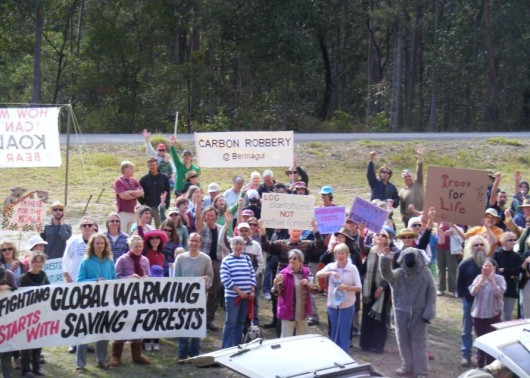 A community morally right to defend habitat and prepared to defend that right A community morally right to defend habitat and prepared to defend that right
.
“They are logging old-growth in Dampier, threatened species habitat in South Brooman, endangered species habitat in Nadgee and now this.”
“The loss of biodiversity coupled with logging and burning means the condition of many forests is as bad as the endangered ecological communities on private land, unable to support most threatened and endangered species and unable to recover.”
“We urge the newly appointed Minister for the Environment, Mr John Robertson, to step in on behalf of the native forests and their dependents and stop these archaic practices.”
“The current government policy of destroying habitat to satisfy ‘wood supply agreements’ is robbing from the future generations their chance of survival. The amount of breaches was astounding and shows that Forests NSW cannot be trusted to log these important areas of Koala habitat.”
“We have inspected many other logging operations in the past year and have found the same breaches everywhere we have looked. This is not a once off mistake but a systemic disgust for any environmental protection measures.”
Conservationists state the native forest logging industry is unsustainable and only propped up by political will, public subsidies and union backing.
Spokesperson for the South East Region Conservation Alliance, Pru Acton, says:
“The significant social and economic costs of reduced biodiversity can only increase while our natural systems are poorly managed.”
“Credible experts agree that the cost of logging this habitat is not only the last few koalas, but also potable water supplies, oysters, the inspiration for the local artists community, and another chunk of the Wilderness Coast’s tourism potential.”
“It seems the NSW Government has now decided its contractual obligations to supply sawlogs locally and woodchips to Asia is more important then protecting this much loved native animal.”
.
South East Region Conservation Alliance
.
Conservationists state the native forest logging industry is unsustainable and only propped up by political will, public subsidies and union backing.
Spokesperson for the South East Region Conservation Alliance, Pru Acton, says: “The significant social and economic costs of reduced biodiversity can only increase while our natural systems are poorly managed.”
“Credible experts agree that the cost of logging this habitat is not only the last few koalas, but also potable water supplies, oysters, the inspiration for the local artists community, and another chunk of the Wilderness Coast’s tourism potential.”
“It seems the NSW Government has now decided its contractual obligations to supply sawlogs locally and woodchips to Asia is more important then protecting this much loved native animal.”
.
[Source: ‘Logging resumes at Bermagui’, by Stan Gorton Narooma News, 20090204 – note the Narooma News has removed this news item online. However, the Narooma News has chosen not to remove its following story (Source: ^http://www.naroomanewsonline.com.au/story/191381/albino-possum-causes-log-truck-roll-over-at-narooma/ if it be not similarly removed].
 Speeding logging trucker blames possum
..Narooma News editor’s reputation shot Speeding logging trucker blames possum
..Narooma News editor’s reputation shot
.
Narooma News spins the following story to appease local logger readership:
.
“In a bizarre set of circumstances, a rare but dead albino possum is believed to have caused a log truck roll-over on the Princes Highway just south of Narooma.
The accident occurred just after 1pm when witnesses said a local from Wallaga Lake stopped to look at the road-kill possum that had been lying on the roadside at the entrance to the Island View Beach Resort.
A series of cars backed up behind the stopped vehicle in the southbound lane. Another Narooma local who was last in the line of stopped cars looked in his rear-vision mirror only to see the huge red-coloured truck coming up fast from behind.
“I think I am going to buy a lottery ticket,” said the local, who at one point thought the truck was going to smash into him and end his life.
The truck driver then allegedly swerved onto the wrong side of the road, narrowly missing the line of cars and while he was fortunate not to face any oncoming northbound traffic, he did lose control on the straight stretch of highway.
The truck reportedly clipped a boat trailer, flipped onto its side, sliding down the highway with the prime mover coming to rest in bushland just off the verge north of the Nangudga Bridge.
An ACT couple who among those first on the scene were able to help the truck driver out of the cab but they said he was badly shaken up and was not aware of where he was.
The Pambula man was the only person injured in the accident and was taken to Moruya Hospital for treatment.
The highway was closed down to one lane with firefighters, police and RMS personnel cleaned up and investigated the scene.
Residents from the nearby Island View caravan park were alerted to the accident by a loud bang and they lined the highway watching the accident.
The accident occurred at the start of the June long weekend where NSW police were out in force urging drivers to be careful on the busy roads.
Albino or golden brush-tailed possums are very rare but there is a known population living in the Narooma area.’
.
~ by the Narooma News editor…and watch out for drop bears too!
.
Meanwhile NSW Forests remains culturally contemptuous to NSW forests
.
Forests NSW recruit their students with Communications degrees to lie for it on its website:
“State forests in NSW are managed sustainably to provide a supply of timber today and into the future, to protect the environmental values of the forest and provide community amenities.”
Forests NSW website claims that “Ecologically sustainable forest management (ESFM) is our guiding philosophy. ESFM is about managing forests to maintain ecological principles and biodiversity while optimising the benefits to the community from all uses of the forest…”
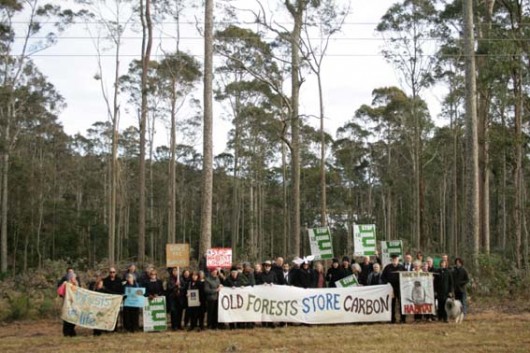 Narooma Community in defence of Koala Habitat
– clearly not convinced about Forests NSW spiel about “optimising the benefits to the community” Narooma Community in defence of Koala Habitat
– clearly not convinced about Forests NSW spiel about “optimising the benefits to the community”
.
Revolving Door politics of NSW Labor
.
In the revolving door politics of NSW Labor, Premier #3 Nathan Rees on 16th November 2009 sacked Ian MacDonald from his DPI Ministry.
Rees was himself sacked as premier on 3 December, then a week later, Labor Premier #4 Kristina Keneally (Labor show pony) reappointed Ian MacDonald ‘Minister for State & Regional Development and Minister for Mineral & Forest Resources‘ in December 2009.
The labelling of Minister for ‘Forest Resources’ left NSW State Forests in no doubt about the death row status. Throughout NSW Labor’s factional power shuffle Macca’s chair never got cold.
The then Minister for Primary Industries , Tony Kelly, overseeing Forests NSW, claimed on 18 November 2009: “The NSW Government has a solid track-record for maintaining prosperous and sustainable primary industries, I will be working hard with industry to ensure this tradition continues.”
.
[Source: Source: NSW Department of Primary Industries, ^http://www.dpi.nsw.gov.au/__data/assets/pdf_file/0019/308251/Minister-Kelly-Visits-Industry-and-Investment-NSW-Headquarters.pdf, since deleted by the NSW Government – the file, not the department unfortunately]
.
Tigerquoll’s Position
.
All State Forests should be added to Australia’a National Park Estate. State Governments and their narrow mindset culture cannot be trusted with ecology. Boral and Nippon Paper can transition their logging operations into plantation-only FSC resources.
The Twofold Bay Woodchip Mill was set up near Eden in 1969 by Daishowa Paper Manufacturing Company has exported and profitted from over 35 million tonnes of Australian native forest woodchips, mostly to Japan, where its parent company is based.
In contributing to the annihilation of thousands of hectares of Australia’s native forest habitat the Daishowa Twofold Bay Woodchip Mill is Australia’s Habitat Auschwitz. It must be unceremoniously closed down immediately.
 Daishowa – Japan’s BIG Corporate Eco-Rapist and BIG Koala Exterminator Daishowa – Japan’s BIG Corporate Eco-Rapist and BIG Koala Exterminator
.
 Boral Spotted Gum – corporate shareholder perspective
. Boral Spotted Gum – corporate shareholder perspective
.
 Spotted Gums too magnificent to kill
[Source: Save Our Water Ways Now, photo by Robert Whyte,
^http://www.saveourwaterwaysnow.com.au/01_cms/details_pop.asp?ID=135] Spotted Gums too magnificent to kill
[Source: Save Our Water Ways Now, photo by Robert Whyte,
^http://www.saveourwaterwaysnow.com.au/01_cms/details_pop.asp?ID=135]
.
Further Reading:
.
[1] South East Region Conservation Alliance, ^http://www.serca.org.au/
.
[2] ‘South East Forests must be protected’, by Greens MP David Shoebridge, 20110629, ^http://davidshoebridge.org.au/2011/06/29/south-east-forests-must-be-protected/
.
‘Greens MP David Shoebridge today met with local campaigners and timber workers in the Bermagui State Forest to get a first-hand view of the impact of continued logging in the South East Forests.

“There is a real concern that this logging is further fracturing the remaining stands of koala habitat in the South East,” Mr Shoebridge said.
“The logging is being undertaken in a nature corridor that links Wallaga Lake National Park and Bermagui Nature reserve. This corridor should be protected.
“With the logging at Bermagui coming within a few hundred meters of town the prospects of more intensive and drier regrowth producing higher levels of fire hazard are real.

“Forests NSW has said that the beautiful “cathedral” entrance to Bermagui will be protected. However on closer inquiry only a small part of the western side and a 50m ‘visual protection zone’ to the east is currently protected.
“In discussions with Forests NSW today they have committed to reviewing the decision on the cathedral to consider protecting all of it from logging. This would be a welcome, if modest, concession.
“The South East Forests are a priceless natural asset and this new State government has a real chance to break with the past and save them from continued logging for wood chips.
“Local campaigners are committed to saving these beautiful forests and this will remain a key focus in the coming years,” Mr Shoebridge said.
.
[Ed: That was over a year ago – our love and commitment for the old forest – we remember ]
.
Tags: Bermagui Community, Bermagui State Forest, Boral, Build something great, Eucalyptus maculata, Forest-Fiddling Loggers, Forests NSW, Grey-Headed Flying Foxes, Ian Macdonald, koala habitat, Kristina Keneally, Logging, Narooma Community, Sapphire Coast, Save the Koala, South East Corner, South East Forest Rescue, Spotted Gum
Posted in Koalas, Possums and Gliders, Quolls, South East Corner (AU), Threats from Deforestation | No Comments »
Add this post to Del.icio.us - Digg
Monday, June 18th, 2012
The following article was initially written by Tigerquoll entitled ‘US Republican Katherine Harris – a Presbyterian ‘pro-lifer’ who treats animals like this!‘ and published on CanDoBetter.net 20091129.
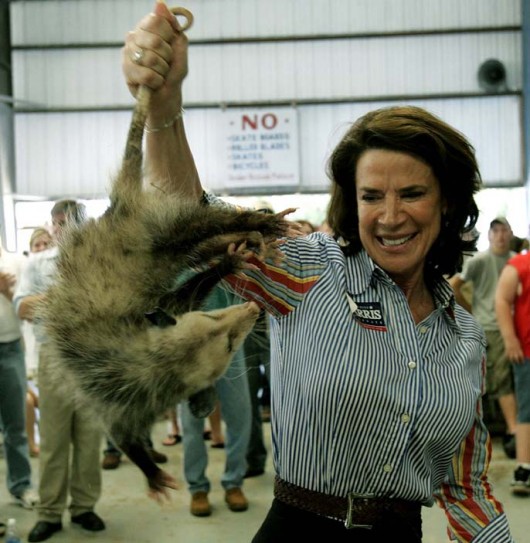 Animal Cruelty by US Republican Katherine Harris
The woman should have a criminal record and be prohibited for life from holding public office
(Photo: AP) Animal Cruelty by US Republican Katherine Harris
The woman should have a criminal record and be prohibited for life from holding public office
(Photo: AP)
.
In rural Wassau in the southern US state of Florida, the Wausau Possum Festival has become an annual summertime folk festival over the past forty years. This event is said to celebrate the role of the opossum in the survival of the populace of Northwest Florida during the depression. Aside from the music, a key feature is the fundraising possum auction for the local Wausau Development Club, which involves holding opossums by their tail. Possum is served up as a main fare.
The Virginia oppossum (Didelphis virginiana Kerr) is the only marsupial native to the south eastern region of North America and extending through Central America.
American Republican politician Katherine Harris of Florida is shown here in August 2006 during her campaigning for the 2006 Florida United States Senate election, holding a possum by the tail and is said to have bid $400 at the so-called ‘possum auction’.
According to the festival’s sick tradition, every election year, national and statewide candidates in Florida must prove they are good country folk by mistreating a possum at the Wausau Possum Festival. “Candidates bid for a possum, taking it out of a holding area by its tail and giving it a shake to terrify the creature into going limp so it won’t claw them. They’re later fed and released into the wild“.
[Source: ^ http://wonkette.com/192467/future-senator-katherine-harris-with-possum, Florida, USA, August 2006]
As one commenter rightly suggested:
“Someone should pick her up by her nether regions and shake her until she goes limp. Then take her back to the woods.”
.
Friday, August 19th, 2011
(The following article was initially posted on CanDoBetter.net by Tigerquoll on 20090426. It has since been modified.)
.
 VicForests’ neo-colonial practice of logging old growth East Gippsland forests, justifies such culling by claiming compliance with Australia’s wood production Standard AS 4708-2007. But this standard is Mein Kampf for ecological genocide of East Gippsland Forests. VicForests’ neo-colonial practice of logging old growth East Gippsland forests, justifies such culling by claiming compliance with Australia’s wood production Standard AS 4708-2007. But this standard is Mein Kampf for ecological genocide of East Gippsland Forests.
Have a read: http://www.forestrystandard.org.au/files/Standards/4708.pdf [Read the Standard]
Under this official Australian Standard that sees only the wood for the trees, it includes two criteria that serve to deliver propaganda spin respect for forest ecology. One must recognise these criteria accompanying Criterion 4—Forest management shall maintain the productive capacity of forests. Need I say more?
Forestry Propaganda Criterion #3 for instance, requires forest management to ‘protect and maintain the biological diversity of forests’. Wonderful wholesome, noble and holistic rumblings about this one – but gullibles wake! VicForests <em>Mein Kampf</em> hides the ‘ chainsaw-speak‘ in the detail:
* ‘Small-scale clearing is permitted up to a limit of 40 hectares on a single forest management unit’. ‘Conservation of threatened (including vulnerable, rare or endangered) species and ecological communities requires the forest manager to minimise adverse impacts by ensuring he/she takes into account of known information and relevant specialist advice‘. (Makes Fiji look like a democracy!)
Forestry Propaganda Criterion 5 requires forest management to maintain forest ecosystem health and vitality, yet is so vague as to allow forest ‘practices’ only to ensure that damage stays “within tolerable levels”. Does this mean one tree per hectare can be left standing or may be two?
.
Then there’s Clause 4.5.3:
‘Forest managers managing native forests shall use fire and other disturbance regimes to maintain and enhance forest ecosystem health where appropriate to the forest type or scale.’ [p.25]
.
…that is, burn and disturb native forests at will, because we argue that doing so enhances forest ecosystem health. Whoops! The wind picked up and the forest is gone; still we complied with AS 4708-2007!
Such contemptible logic would argue that a bushfire raging through a town can to it good, because eventually the town is rebuilt and the people eventually return, look at Narbethong!
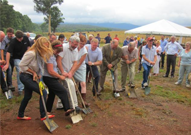
.
.
The Ferguson Tree – lest we forget
.
“The tallest tree ever properly measured was a Eucalyptus tree and was 436 feet tall. It was measured by William Ferguson on the 21st of February in 1872. Alarmingly the crown was broken off when the tree was still 1 meter thick, leading to claims that it once was up to five-hundred feet tall in one point in its lifetime.”
The length was a staggering (if true) 133 metres (436 feet) with its crown (the tree’s top) broken off!! The stump’s diameter five feet off the ground was 5.5m (18 feet) and at its broken top its diameter was still 1 metre. It is estimated that had this tree actually still been intact it would have approached 152m (500 feet) in height. The surveyor also noted numerous fallen trees in the same area over 106m (350feet) in height.
It would have been a Mountain Ash or Eucalyptus regnans. Sorry, no photo available. The legend remains only in text.
[Source: ^http://jtpredwoods12345.blogspot.com/]
.
.
‘VicForests accused of felling old-growth mountain ash’
.
[Source: Adam Morton, 20100629, The Age newspaper, ^http://www.theage.com.au/victoria/vicforests-accused-of-felling-oldgrowth-mountain-ash-20100628-zf5o.html]
.
‘The Victorian government’s forestry arm will face a legal challenge over claims it illegally logged old-growth forest and increased the risk to a threatened species.
Environmental groups accuse VicForests of felling dozens of pre-1900 ash eucalypts, breaching the Central Highlands Forest Management Plan. An impending legal case will also claim the timber agency failed to protect habitats necessary for the survival of Victoria’s threatened faunal emblem, Leadbeater’s possum.
Ecologist Jacques Cop, from consultants Acacia Environmental Group, said a survey of just one coupe near Toolangi found 31 pre-1900 ash eucalypts had been logged. Five stumps were more three metres across.
”These are trees that are 200 or 300 years old,” he said.
Mr Cop said the area should also have been protected as a Leadbeater’s possum habitat as it met the threshold of having at least 12 hollowed trees within three hectares. He said neither the state Department of Sustainability and Environment nor VicForests carried out ground surveys to check if ecological requirements were being met. Sarah Rees, president of local group My Environment, said the situation was an emergency.
’31 pre-1900 ash eucalypts had been logged’
.
“If this doesn’t stop we’re going to lose the last viable habitat for a range of different species, but Leadbeater’s possum carries the strongest case for legal protection“, she said.
The state government said it took the allegations “extremely seriously“.
Spokesman Michael Sinclair said VicForests would investigate the alleged breaches and report to the Department of Sustainability and Environment. VicForests spokesman David Walsh said the agency carried out detail planning before harvesting to ensure it acted within the law and had offered to meet local residents to better understand their concerns.
“No old-growth forest is harvested by VicForests in Victoria’s central highlands region”, he said.
The legal case, being prepared on behalf of a group called the Flora and Fauna Research Collective, comes amid community concern about the scale of logging in the central highlands after the Black Saturday bushfires.
The Wilderness Society said that evidence supporting the latest claims showed illegal logging of native forests was rife under the state government’s watch.
A separate allegation of illegal logging at Brown Mountain, in east Gippsland, is the subject of a pending Supreme Court judgment.
“Premier Brumby must act now to end VicForests’ woodchip rampage in Victoria’s magnificent native forests“, said Wilderness Society spokesman Luke Chamberlain.

Sarah Rees at the base of an ancient mountain ash spared the chainsaw but killed during a clean-up fire near Toolangi.
She says the present situation is an emergency.
Photo: John Woudstra
.
.
 VicForests motto reads: “Victorian Timber: beautiful, natural, functional” VicForests motto reads: “Victorian Timber: beautiful, natural, functional”
[SOURCE: http://www.vicforests.com.au/]
.
..in lay terms, this means kill beautiful natural specimens – they make the finest woodchips for reliable REFLEX office paper.
.
.
VICFORESTS: “VicForests employs over 140 staff across 10 Victorian sites located in Melbourne, Healesville and regional areas of Central Highlands and East Gippsland.
We have a variety of exciting career opportunities available – our Foresters specialise in tactical and operational planning, roading, harvesting and contract management, silviculture and native forest regeneration.
Other career paths include customer management, resource and business analysts, safety and risk, operational audit, forest scientists and product delivery.”
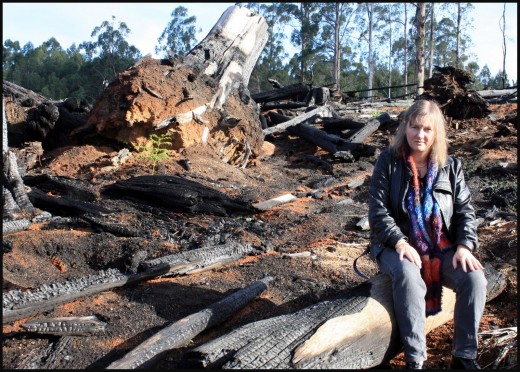
VICFORESTS: “We also employ staff in non-forestry roles including IT, HR, communications, finance, administration and customer service. A significant proportion of our staff and contractors are also involved with fire-fighting efforts each year.
VicForests is focused on investing in its employees through training, development, and providing career opportunities.”
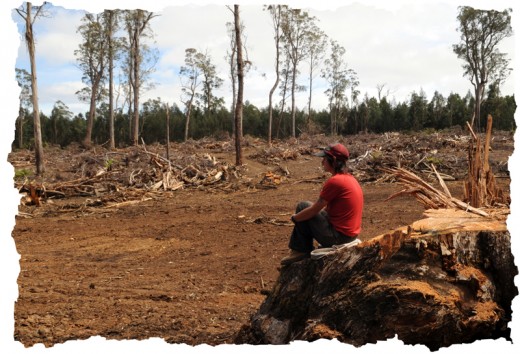
VICFORESTS: “We look for dynamic people who have a strong desire to be part of an organisation that strives to achieve success through implementing excellent and innovative business and timber industry practices for our customers and stakeholders.
Contributing to the timber industry is something that VicForests and its staff are proud of.”
.
[Source: ^http://vicforests.logic1.com.au/employment.htm, accessed 20110819]
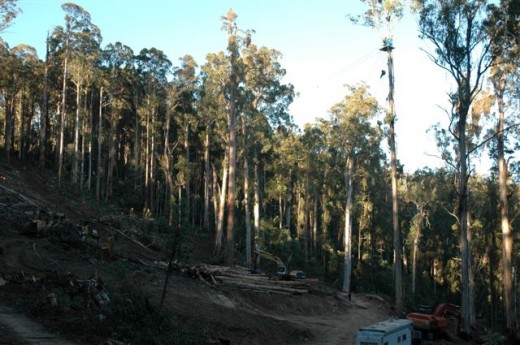 Vicforests’ coup at Stoney Creek
East Gippsland 2009 Vicforests’ coup at Stoney Creek
East Gippsland 2009
.
.
‘VicForests’ 2009 Annual Report reveals $5.1 million loss’
.
‘VicForests’ 2009 Annual Report has once again revealed that the logging agency continues to waste taxpayer millions of dollars sending our forests to the woodchip mills. The report shows that VicForests has posted a loss this year of $5.1 million. This is on top of last year posting a tiny profit after receiving a $5 million lifeline from government, and a loss the previous year.
 Woodchip train makes its way to Midways, Geelong (2009) for as little as $2.50 per tonne.
Photo: Wilderness Society Collection
Woodchip train makes its way to Midways, Geelong (2009) for as little as $2.50 per tonne.
Photo: Wilderness Society Collection
.
‘Whilst VicForests squanders Victorian taxpayer’s hard earned money, woodchipping and paper companies continue to post handsome profits. Whilst we don’t yet know how much they will make for 2009, South East Fibre Exports, a wholly owned subsidiary of Japanese paper giant, Nippon Paper, last year made over $10 million profit. They woodchipped approximately half a million tonnes of Victoria’s native forests, and this year paid as little as $2.50 per tonne for them.
Another giant company, Australian Paper, which makes Reflex papers, is VicForests’ largest single customer and was recently purchased for around $700 million by Nippon Paper. The $5.1 million loss is on top of an extra $1.3 million handout for bushfire recovery and does not include the massive $29 million royalty that it has failed to hand over to the state government who, along with the Victorian public, own these forests.’
.
[Source: ^http://www.wilderness.org.au/campaigns/forests/vicforests-2009-annual-report-reveals-5.1-million-loss]
 A tombstone of the once impenetrable forest.
A Mountain Ash stump alongside an old forestry track in Balnook, Gippsland.
Note the notches cut in the trunk for standing planks to cut the tree down by axe!
A tombstone of the once impenetrable forest.
A Mountain Ash stump alongside an old forestry track in Balnook, Gippsland.
Note the notches cut in the trunk for standing planks to cut the tree down by axe!
.
.
Reflex Office Paper
‘Paperlinx’s giant Maryvale mill located in Victoria’s Central Highlands is the largest pulp and paper making complex in Australia, consuming 475,000 cubic metres of eucalyptus forest per annum (RFA, 1998).
‘In July 2006, the Maryvale Mill received Forest Stewardship Council (FSC) Chain of Custody Certification for A4 Reflex products manufactured on its Number 3 and Number 5 Paper Machines. Paperlinx has been proudly promoting its environmental credentials ever since (as well as before).
Paperlinx is Australia’s only office paper producer. Its flagship product REFLEX copypaper is 100 per cent virgin native forest. Woodchips to make the paper are sourced from areas including rainforest, old growth forest, endangered species habitat and Melbourne’s largest water source, the Thompson Dam catchment area. Woodchips are also sourced from the Strzelecki Rainforest Reserve, an area that was promised protection by the state government due to its high conservation value.
These areas can be visited and viewed first hand, or determined by satelite image maps which show different forest types (such as rainforest as compared to woodlands) and where logging is occuring. The fact that Paperlinx gained FSC accreditation has raised concerns amoung environment groups who have been campaigning for the protection of these areas for over a decade.
Reflex Recycled Paper
Paperlinx has recently released a brand of paper wrapped in green packaging labelled Recycled. Fifty percent of REFLEX Recycled paper is made from pre-consumer waste (printers’ offcuts), but no genuine post-consumer (eg kerbside collected) recycled papers. The other fifty percent is from the same virgin native forest as stated above.
According to The Wilderness Society Paperlinx has the resources and technology to make use of alternative sources such as plantations and recycled paper, but doesn’t do so as it receives state-owned native forest logs for a significantly lower cost than plantation logs.
Due to the lack of accurate information reaching the public, an alliance of Australia’s peak environment groups including The Wilderness Society, Environment Victoria, Friends of the Earth and the Australian Conservation Foundation released a flier in 2004 urging people to boycott REFLEX paper and listing alternatives.
THE ALTERNATIVE
There is no 100 per cent recycled office paper manufactured in Australia. Brands made overseas that are available in Australia include Evolve, Canon 100 and Fuji Xerox Recycled Supreme.’
[Source: ‘Reflex Office Paper‘, Greenwash .org ^http://www.greenwashreport.org/node/41 ]
.
‘Always rely on Reflex to woodchip old growth‘
  Scott Gentle from the Victorian Forest Contractors Association
questions the logic of the Yarra Ranges council’s decision to boycott Reflex paper products.
[Source: ^http://free-press-leader.whereilive.com.au/news/story/paper-ban-anger/] Scott Gentle from the Victorian Forest Contractors Association
questions the logic of the Yarra Ranges council’s decision to boycott Reflex paper products.
[Source: ^http://free-press-leader.whereilive.com.au/news/story/paper-ban-anger/]
.
.
Further Reading:
.
[1] ‘Brown Mountain Rape’, ^http://candobetter.net/node/1005
[2] Ethical Paper, ^http://www.ethicalpaper.com.au/
[3] Save Sylvia Creek Toolangi, ^http://www.myenvironment.net.au/index.php/me/Community/SAVE-Sylvia-Creek-Toolangi
[4] Brown Mountain – final court orders, ^http://www.eastgippsland.net.au/?q=campaigns/brown_mountain/whats_new
[5] Reflex Office Paper, ^http://www.greenwashreport.org/node/41
[6] Victorian Supreme Court Decision: ‘Environment East Gippsland Inc v VicForests [2010] VSC 335 (11 August 2010)’, ^http://www.austlii.edu.au/au/cases/vic/VSC/2010/335.html
.
.
– end of article –
Tags: Acacia Environmental Group, Australian Paper, Brown Mountain, chainsaw-speak, East Gippsland logging, ecological genocide, Ferguson Tree, Forestry Standard 4708, Forestry Standard Certification, Gippsland Giants, illegal logging, Leadbeater’s possum, Logging, Nippon Paper Group, Reflex Paper, Toolangi, VicForests
Posted in Gippsland (AU), Possums and Gliders, Threats from Deforestation | No Comments »
Add this post to Del.icio.us - Digg
Saturday, July 23rd, 2011
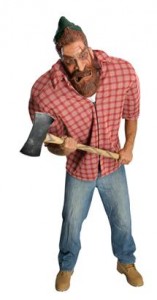 Posted by Tigerquoll: Posted by Tigerquoll:
The VicMolesters are at it again.
Chainsaw-wielding loggers of VicForests are set to target old growth Mountain Ash near Sylvia Creek in the Central Highlands, to Melbourne’s north, east of Kinglake. That an inferno that was Black Saturday in February 2009 ripped through forests in the area around Narbethong, Toolangi and Kinglake matters squat to these woodchip mercenaries.
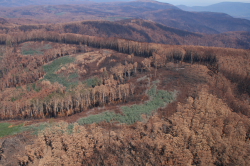 The Burned Area Emergency Response Report (BAER) commissioned by the Brumby Government after the 2009 bushfires recommended preserving refuge areas such as those in Toolangi for biodiversity recovery. The Burned Area Emergency Response Report (BAER) commissioned by the Brumby Government after the 2009 bushfires recommended preserving refuge areas such as those in Toolangi for biodiversity recovery.
That the targeted forests have become isolated islands of habitat to rare wildlife matters squat to them. That the forests are home to Victoria’s endangered and disappearing Leadbeater’s possum, the Spotted-Tail Quoll, the Sooty Owl, and Baw Baw frog are but collateral damage to these bastards. “Over half the Leadbeater’s Possum’s forest habitat was destroyed in the Black Saturday bushfires, so every last bit that survives is incredibly precious, and essential to this tiny animals’ survival,” said spokesperson for local group ‘My Environment’ Sarah Rees.

“The criteria the government is using to identify Leadbeater’s Possum habitat are too conservative. We’re talking about Victoria’s wildlife emblem, we should be making sure they multiply and flourish, not simply cling on to the edge of survival.”
VicForests old growth logging is all for a quick buck from woodchip sales to make Reflex Paper. They would sell their daughters for less.

“DSE has confirmed the logging coupe contains old growth trees, even though VicForests and Government Minister Louise Asher insisted last week that it was not old growth forest,” said Wilderness Society forest campaigner Luke Chamberlain.
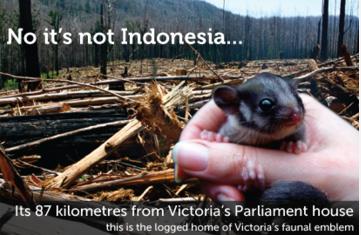
Tigerquoll
Suggan Buggan
Snowy River Region
Victoria 3885
Australia
Tags: Baw Baw Frog, Black Saturday, Burned Area Emergency Response Report, DSE, Eucalyptus regnans, Leadbeaters Possum, old growth granny killers, Sooty Owl, Spotted-Tail Quoll, Sylvia Creek, The Wilderness Society, Toolangi, VicForests, VicMolesters
Posted in Owls, Possums and Gliders, Quolls, Reptiles, Threats from Bushfire, Threats from Deforestation | No Comments »
Add this post to Del.icio.us - Digg
Thursday, March 24th, 2011
 Golden Bandicoot is under threat of extinction in The Kimberley. Golden Bandicoot is under threat of extinction in The Kimberley.
.
“Australia has the worst extinction record for mammals of all countries in the world (Johnson 2007), and has international obligations (Convention on Biological Diversity 2006) and national commitments (Commonwealth of Australia 1999) to avoid species extinctions. Meeting these obligations will require effective and ongoing conservation management.”
[Source: Priority threat management to protect Kimberley wildlife, p47,CSIRO Ecosystem Sciences, Feb 2011, Australia]
.
.
.
At 6am on 1st June 1990, I started my prepared and serviced HT Holden outside my father’s place in Melbourne and executed my planned drive mission across to Adelaide then up the Centre to Kununurra in the East Kimberley. I was 26; I had saved up. I was on a mission to get my commercial helicopter license and to work in cattle mustering in the Kimberley in the process to ‘get my hours up’.
The Kimberley was a very hot and steamy; a world away from temperate urban Melbourne.
Well, after some months and growing up in a remote landscape, I did achieve my license with Golden West Helicopters, then did some mustering. I took risks, recalling pivot turns over isolated beaches and I learnt a lot…what city kids should.
Some memories that will remain with me (until my memory doesn’t) are the waking to East Kimberley bird calls from the pilot shack at the red dusty caravan park down the road from Kununurra Airport. When building my cross-county and low-level endorsement hours up, I will never forget flying the R22 low over wild rivers full of long lizards (crocs), or slowly navigating the thick mist at 50 foot AGL at dawn, or flying free over the wide rugged red rock landscape, or finding the eagles nest on a remote hill miles off in some north westerly direction from Kununurra. My memory of the Kimberley is of a wild special place, like Emma Gorge and the amazing remote drive to Wyndham – so isolated – so free. But it is the unique bird calls that recur in my memory of the magic natural tropical home of The Kimberley.
So when I now later learn that the Kimberley and its scarce wildlife are under threat, I have no hesitation posting the following article to advocate the urgency of the Kimberley’s wildlife conservation.
The Kimberley is indeed like nowhere else!
~ Editor
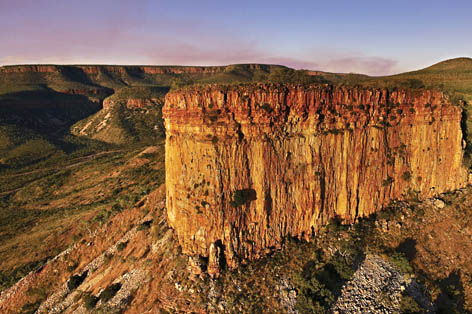
.
.
According to the findings of a current ecological study and report published in February 2011 by the CSIRO and The Wilderness Society:
“up to 45 native species in the Kimberley region will die out within 20 years if no action is taken”.
.
The report found that the two most destructive threats to survival of native species are:
-
Feral cats
-
Frequent large scale fire regimes (deliberate or neglected)
.
It has called for an immediate cash injection of $95 million to save wildlife like the Golden Bandicoot, the Scaly-tailed Possum and the Monjon Rock Wallaby from extinction. Even with the current $20 million per year spent on Kimberley conservation the region is still set to lose some 31 native animals, according to the report.
The report is a culmination of collaborative ecological research and workshops was undertaking across the Kimberley region by scientists with the CSIRO’s Ecosystem Sciences, along with The Wilderness Society, Australian Wildlife Conservancy, Fenner School of Environment and Society (ANU), and The Ecology Centre at the University of Queensland. Its authors from these organisations include Josie Carwardine, Trudy O’connor, Sarah Legge, Brendan Mackey, Hugh Possingham and Tara Martin. Regrettably, the only contributing organisations permanently based in the Kimberley appear to be the Kimberley Land Council and Environs Kimberley. Perhaps this is half the problem; the other half being ye ol’ lack of political will, because surely Australia has plenty of taxpayer funds in circulation.
If ever the ecological precautionary approach principle was a vital precondition of human actions, the Kimberley is the place where it most applies. The recurring theme throughout the report is the lack of comprehensive survey data from the region. Ecologically, the Kimberley is grossly data deficient. Consequently, humans know not what they do, nor what the impact of what they do is, nor how close the thirty odd threatened and endangered native animals are to regional extinction.
The Scaly-tailed Possum (Wyulda) , Monjon Rock Wallaby and the Cave-dwelling Frog are thought to be uniquely endemic to the region, so if they are wiped out from the Kimberley, as a species they will become globally extinct, like the Tasmanian Tiger (Thylacene) and the Dodo.
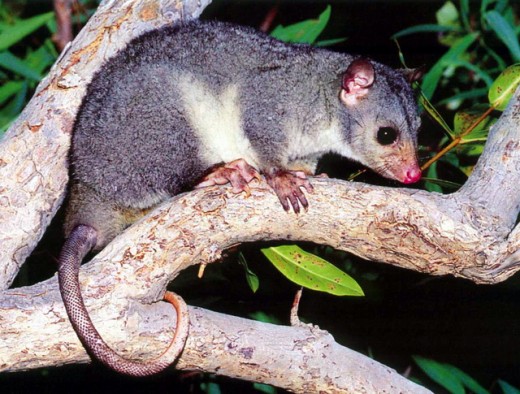 Wyulda, or Scaly-tailed Possum (Wyulda squamicaudata)
endemic to the Kimberley, and highly sensitive to bushfires Wyulda, or Scaly-tailed Possum (Wyulda squamicaudata)
endemic to the Kimberley, and highly sensitive to bushfires
.
Due to human encroachment and habitat destruction across northern Australia and the ferals and destructive practices they have brought with them, the still mainly wild Kimberley remains the last survival refuge for many of Australia native at-risk species.
Native vertebrate fauna of the Kimberley like the Northern Quoll, Golden-backed Tree-Rat, Golden Bandicoot, Gouldian Finch, Spotted Tree Monitor, Western Chestnut Mouse, and Stripe-faced Dunnart are at serious risk of extinction.
.
Priority Threat Management Actions for The Kimberley
.
Experts identified key broadscale threat management actions for improving wildlife persistence (p5):
1. Combined management of fire and introduced herbivores! – feral donkeys, cattle, horses, pigs
2. Eradication, control, quarantine of weeds! – rubber vine, gamba grass, mesquite, passionfruit
3. Control of introduced predators! (particularly feral cats)
.
“The single most cost-effective management action would be to reduce the impacts from feral cats (at $500,000 per bioregion per year) with a combination of education, research and the cessation of dingo Baiting.” [p.6-7]
.
While anticipated to have low feasibility of success, the feasibility has not been started nor tested.
“The next most cost-effective action is to manage fire and introduced herbivores (at $2–7 million per bioregion per year); this action is highly feasible and, if implemented effectively, would generate large improvements in probabilities of persistence for almost all wildlife species.” [p.6-7]
.
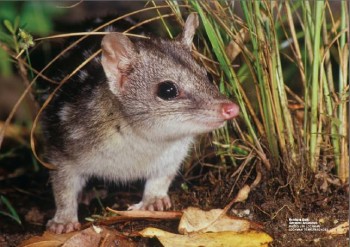 Northern Quoll (Dasyurus hallucatus)
Native to the Kimberley, but seriously at risk from feral cats and bushfires Northern Quoll (Dasyurus hallucatus)
Native to the Kimberley, but seriously at risk from feral cats and bushfires
.
.
Natural Integrity and (Human) Threats
.
.
Threats to The Kimberley from ‘Bushfire Management’
.
“Frequent, extensive and very hot fires in the Kimberley affect its ecosystems in several ways. They change the structure and composition of vegetation, endangering some species of plants and removing important wildlife habitat refugia. They also leave the ground unprotected from the heavy monsoonal rains, causing soil erosion and later stream sedimentation.”
Inappropriate fire regimes pose a threat to biodiversity in the Kimberley and across northern Australia (e.g. Bowman et al. 2001; Russell-Smith et al. 2003). Historically, Indigenous people managed fire throughout the region, which included fine scale prescribed burning across a variety of vegetation types and around important cultural and food resource sites, such as rainforest patches. This most likely resulted in a mosaic of burnt and unburnt vegetation and provided buffers against unplanned wildfires around critical biodiversity refuges (Environmental Protection Authority 2006).

Broadscale State-sanctioned Arson of the Kimberley
(Photo: Ed Hatherley, Western Australia Department of Environment and Conservation)
[Source: ^http://www.australiangeographic.com.au/journal/new-fire-plan-for-the-kimberley.htm]
.
These fire patterns have been replaced in the past few decades with one that is increasingly dominated by extensive and intense mid to late dry season fires. As a consequence, the mean age (and variance) of the vegetation has declined (Legge et al. 2010).
Altered fire regimes interacting with other degrading processes, especially over-grazing, have led to structural and floristic change in vegetation, declines in vegetation cover and critical resources such as tree hollows. They are also associated with increased soil erosion after heavy rains (doubled erosion rates have been recorded in similar situations in the Top End of the Northern Territory (Townsend and Douglas 2000), leading to increased sedimentation in stream beds. These changes have severe negative impacts on native flora and fauna (Vigilante and Bowman 2004; Legge et al. 2008). Extensive flat savanna areas are more vulnerable to large intense fires, as there are fewer inflammable refugia such as rocky areas.
Without appropriate management, the impacts of fire are likely to increase as the region is predicted to become even more fire prone with ongoing climate change (Dunlop and Brown 2008)”. [pp.11-12]
.
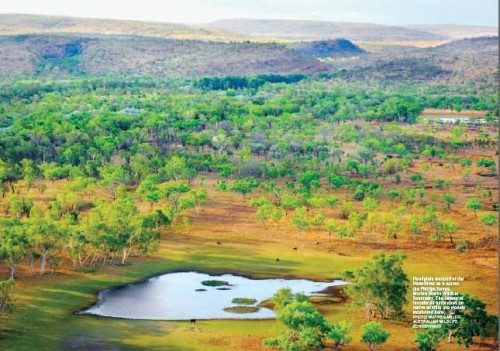 Floodplain wetland of the Hann River
as it leaves the Phillips Range,Marion Downs Wildlife Sanctuary, The Kimberley.
© Photo by Wayne Lawler, Australian Wildlife Conservancy Floodplain wetland of the Hann River
as it leaves the Phillips Range,Marion Downs Wildlife Sanctuary, The Kimberley.
© Photo by Wayne Lawler, Australian Wildlife Conservancy
.
.
Threats to The Kimberley from ‘Feral Cats’
.
“Invasion by feral predators has contributed to range reductions and population declines of many native animals in Australia; small to medium sized mammals have been particularly affected. The primary feral predator in the Kimberley is the domestic cat. Cats have possibly been present in the region since the 1880s and were established by the 1920s (Abbott 2002).
The number of cats occurring in the Kimberley is unknown due to difficulties in survey, although a radio-tracking study at Mornington Wildlife Sanctuary suggests there is one individual per 3 km², each eating 5–12 native vertebrates daily. If this population density of cats occurred throughout the region there would be over 100,000 individuals present, consuming at least 500,000 native animals every day (Legge unpublished data).
There is some evidence that dingoes, as a top predator, can help control the negative effects of smaller predators like foxes and cats (Glen et al. 2007; Johnson and VanDerWal 2009; Letnic et al. 2010; Kennedy et al. 2011). The regular baiting of dingoes is therefore likely to exacerbate the problem of introduced feral predators (Wallach et al. 2010).” [pp.13-14]
 Cat killing wildlife
[Source: Australian Wildlife Carers Network, ^http://www.ozarkwild.org/cats.php,
Photo: Australian Government] Cat killing wildlife
[Source: Australian Wildlife Carers Network, ^http://www.ozarkwild.org/cats.php,
Photo: Australian Government]
.
“The Kimberley is a national priority in this effort to avoid further extinctions due to its intact suite of wildlife species, including many endemics, and its role as a refuge for an increasing list of species that are declining or have been lost in other areas of northern Australia.” [p.47]
.
.
Further Reading on Kimberley Conservation:
.
[1] Carwardine J, O’Connor T, Legge S, Mackey B, Possingham HP and Martin TG (2011), Priority threat management to protect Kimberley wildlife , CSIRO Ecosystem Sciences, CSIRO Australia, Brisbane, and The Wilderness Society, (76 pages), ISBN 978 0 643 10306 1, http://www.csiro.au/resources/Kimberley-Wildlife-Threat-Management.html
[2] ‘Australia to lose 45 species in 20 years’, 20110323, AAP, http://www.smh.com.au/environment/australia-to-lose-45-species-in-20-years-20110322-1c5bx.html
[3] Marion Downs Sanctuary (Kimberley), Australian Wildlife Conservancy, http://www.australianwildlife.org/AWC-Sanctuaries/Marion-Downs-Sanctuary.aspx.
[4] Mornington Sanctuary (Kimberley), Australian Wildlife Conservancy, http://www.australianwildlife.org/AWC-Sanctuaries/Mornington-Sanctuary.aspx
[5] Kimberley Land Council, http://klc.org.au/
[6] Environs Kimberley, http://www.environskimberley.org.au/
[7] Kimberley Australia, http://www.kimberleyaustralia.com/kimberley-environment.html
[8] Save the Kimberley, http://savethekimberley.com/blog/?tag=kimberley-environment-development-conservation
[9] Save the Kimberley, http://www.savethekimberley.com/wp/tag/kimberley-environment-development-conservation/
[10] The Wilderness Society, http://www.wilderness.org.au/campaigns/kimberley/northern-australia-taskforce-recognises-kimberley-environment-must-be-protected
[11] The Kimberley – Like Nowhere Else, http://www.likenowhereelse.org.au/what_needs_to_be_done.php
[12] (Government site) West Kimberley National Heritage assessment, Australian Heritage Council,
http://www.environment.gov.au/heritage/ahc/national-assessments/kimberley/index.html
[13] Kimberley Foundation Australia (KFA), http://www.kimberleyfoundation.com
.

.
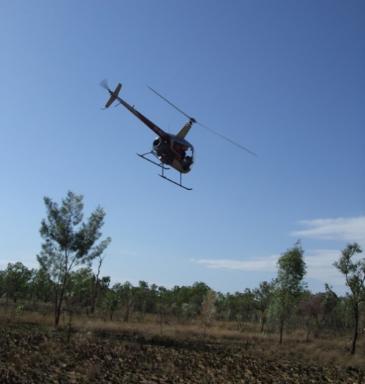
– end of article –
Orang-utans
Tags: Australian wildlife, Cave-dwelling Frog, conservation, CSIRO, Golden Bandicoot, Golden-backed Tree-Rat, Gouldian Finch, Kimberley, Monjon Rock Wallaby, Northern Quoll, Priority threat management, Scaly-tailed Possum, Spotted Tree Monitor, Stripe-faced Dunnart, The Wilderness Society, threat management, Western Chestnut Mouse, Wyulda
Posted in Bandicoots, Kangaroos and Macropods, Kimberley (AU), Mice (native) and Antechinus, Possums and Gliders, Quolls, Reptiles, Threats from Bushfire, Threats from Colonising Species | No Comments »
Add this post to Del.icio.us - Digg
Tuesday, March 16th, 2010
Victorian Government’s VicForests is attempting to log old growth forests at Brown Mountain in East Gippsland, despite Brown Mountain being confirmed habitat for threatened and vulnerable wildlife. Local not-for-profit environment group Environment East Gippsland has commenced proceedings against VicForests in the Supreme Court of Victoria asking the Court for a permanent injunction to stop VicForests from logging Brown Mountain.
.
Reports:
(most recent at top)
‘The Brown Mountain landmark trial has concluded in the Supreme Court on Thursday 25th March – after a 16 day trial.’
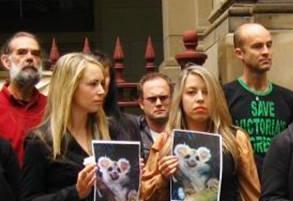
© Environment East Gippsland 2010 ^ http://www.eastgippsland.net.au/
East Gippsland residents outside Victorian State Parliament in early 2010
protesting against the Victorian Government’s immoral and illegal logging and scorched earthing
of old growth forests of Brown Mountain in East Gippsland Victoria, Australia.
.
The photos show a Greater Glider [Petauroides volans]. The Greater Glider is strictly nocturnal, and largely solitary, arboreal species of undisturbed eucalypt-dominated woodland habitats. It is endemic to south eastern Australian forests including Brown Mountain and its population is decreasing largely due to land clearing for agriculture, logging, and bushfires.
[Source: Environment East Gippsland, 20100327, ^http://www.eastgippsland.net.au/]
.
‘Justice Osborn has reserved his decision. It could take anywhere from one month to six months to hand down a finding, but of course we are hoping sooner.
The four week trial has been marked by finger-pointing between government logging bodies VicForests and DSE about who is responsible for endangered species. The behavior of those charged with protecting our wildlife has been exposed to public scrutiny and the Supreme Court’s enquiry.
We believe the government doesn’t survey for endangered wildlife before they log old growth forest, because they don’t want to find anything that would prevent logging. The Court heard that VicForests doesn’t employ wildlife experts, and EEG has argued that both VicForests and the DSE sideline the opinion of the government’s biodiversity unit. We now hope the Minister is fully informed about the very high conservation values in this area.
EEG presented evidence of a new species of crayfish in Brown Mountain Creek, plus experts claiming the stands of old growth are high quality habitat for two species of rare frogs, and the Spotted-tailed Quoll. The evidence for the Spotted-tailed Quoll was heart-breaking – the three last remaining viable colonies are in East Gippsland.
This case has been all about whether irreversible damage would be caused by logging. And as our legal team stated:
“You can’t get damage that is more irreversible than extinction.”
The outcome of this case is important for the protection of wildlife in other stands of high conservation value native forests under threat of clearfelling.’
.
.
‘The Brown Mountain landmark trial has begun!’
[Source: Environment East Gippsland, 20100315, ^ http://www.eastgippsland.net.au/]
.
‘After months of preparation, our legal team and supporters have gathered in Sale and begun the two-week Brown Mountain landmark trial.
Everything is going very well so far. It’s difficult to report on a hearing that is in progress, particularly since we are the plaintiff, so this article might lack a few things.
Our lead barrister, Debbie Mortimer SC, spent Monday afternoon and Tuesday morning in Court outlining what we say are the facts and the law, in a fascinating opening submission.
She spoke about the beautiful native wildlife that is central to our case, and the Court was treated to large pictures of the critters. It was almost surreal, but quite appropriate in our view, to see a team of lawyers in black gowns and wigs defending the furry, the feathered, the cray and the frog.
She said that VicForests has a number of legal responsibilities towards the environment, including endangered species, and that those responsibilities are inconsistent with logging at Brown Mountain.
For a more detailed summary of the first day’s hearing, read this excellent article by The Age journalist Kate Hagen, who is attending the hearing Click here Journalists from ABC Radio and Win TV (channel 9) are also attending the hearings.
VicForests’ lead barrister Ian Waller SC started outlining VicForests’ case this afternoon. When Court adjourned today, he said he still had about an hour to go, so we haven’t got the full picture yet.
But generally speaking he contended that VicForests’ responsibility to the environment wasn’t anywhere near as strong as we made out, and was balanced by its requirement to create economic and social benefits. He said that, to the extent to which VicForests has responsibilities to the environment and native wildlife, it has fulfilled them.
Today (Wednesday), Justice Osborn and the legal teams are having a look at Brown Mountain first hand. It’s not just a bushwalk, though; they will observe first hand some places and concepts about forests, logging and post-logging practices that will later on be discussed in Court.
On Thursday morning, VicForests’ opening submissions will finish, then Environment East Gippsland will bring out our witnesses.’
.
Fate of native Forest Hangs on ‘David v Goliath’ Court Case
Source: Environment East Gippsland, (EEG), 20100301, ^http://www.eastgippsland.net.au/
.
Environment East Gippsland Inc (EEG) v Vic Forests Brown Mountain Court Case, Sale, Monday, March 1
‘The fate of a native forest with trees dating back to Joan of Arc’s time is at stake in a Supreme Court case to be heard at the Victorian centre of Sale from Monday (March 1).
‘The landmark Brown Mountain case has national implications for all native forests in Australia and major political implications, with the green vote likely to be vital for both State and Federal Labor Governments in an election year – which is also the UN’s Year of Biodiversity.
‘In a David and Goliath battle, Environment East Gippsland (EEG) is seeking to stop state-owned logging monopoly VicForests from clear-felling Brown Mountain, a rich and ancient forest which is “chockablock” with threatened and endangered species.
‘The action marks the first time a Victorian court has been asked to grant a permanent injunction against state-sanctioned logging. It will also raise the fundamental conflict in Australia’s Regional Forest Agreement – where the State Government charged with protecting the forests is also the logger.
‘That was underlined in Victoria last year when Environment Minister Gavin Jennings gave the go-ahead to logging at Brown Mountain, declaring there were no threatened species in there. That very morning an EEG camera captured footage at Brown Mountain of a Long-footed Potoroo, one of Victoria’s most endangered species.
‘In the absence of government protection, EEG was forced to take legal action to defend the forest – an enormous and costly step for a community group.
‘In an Australian first, EEG last year won a temporary injunction on logging at Brown Mountain, ahead of the full hearing, with Supreme Court Justice Forrest comparing images from the forest to the WW1 battlefields of the Somme. But even if successful with their action, conservationists anticipate the Victorian Government may favour the logging industry and over-ride the court’s decision as has happened in previous high-profile cases in both Victoria and Tasmania.’
.
.
Brown Mountain Background
Source: Environment East Gippsland ^http://www.eastgippsland.net.au/
.
‘Brown Mountain, in East Gippsland in Victoria, contains old growth forest with ancient trees, one carbon-dated to 600 years old. It is prime habitat for threatened species including the Long-footed Potoroo, Spot-tailed Quoll, Sooty Owl, the Large Brown Tree Frog, the Square-tailed Kite, and the Giant Burrowing Frog. It is also a hotspot for arboreal mammals, like the Greater Glider and the Yellow-bellied glider.
‘Environment East Gippsland (EEG) alleges that logging four coupes on Brown Mountain is unlawful because it breaches provisions to protect endangered and threatened species in the Victorian Sustainable Forests (Timber) Act 2004 and the Flora and Fauna Guarantee Act 1988. In particular EEG says that VicForests has failed to comply with the Code of Practice for Timber Production 2007.
‘In the 2006 election, the Bracks Labor Government promised to protect “the last significant stands of old growth currently available for logging”. Brown Mountain should clearly have been included but, instead, 20 hectares were logged in summer 2008-09. Threatened species surveys triggered a moratorium in February 2009 followed by more surveys over winter and spring and, in August 2009, an EEG survey camera recorded the presence of a Long-footed Potoroo, one of Victoria’s most endangered species, despite the government’s declaration – earlier that same day- that there were NO threatened species at Brown Mountain.
‘In September 2009, EEG successfully obtained an interim injunction against VicForests to prevent logging in the coupes. In granting the injunction, Justice Forrest likened photographs of logging to ‘pictures of the battlefields of the Somme’.
‘Already the case has delivered important precedents:
- The Supreme Court refused VicForests’ application for up to $163,000 in security from EEG before a court injunction was granted to stop logging on Brown Mountain. Having to pay such a large sum would have stopped the community group being able to challenge critical habitat logging.
- The interim injunction, granted late last year, was also a groundbreaking decision because no Victorian court has ever ordered an injunction on logging before.
‘However there are concerns that the Victorian Government could override a logging ban, if the EEG case is successful.
‘Greens Leader Bob Brown successfully brought a court case to halt logging at the Wielangta forest in Tasmania because it threatened the endangered Swift Parrot, Tasmanian Wedge-tailed Eagle and Wielangta Stag Beetle. Then Prime Minister John Howard and Tasmanian Premier Paul Lennon amended the Regional Forest Agreement to permit logging to continue.
‘In 1998, logging at Goolengook in far eastern Victoria, the site of Australia’s longest running forest blockade from 1997 to 2002, was found to be unlawful because it was within a protected area next to a Heritage River. The Victorian government changed the law retrospectively to make the logging legal.’
.
.
Member’s Statement: VicForests – Brown Mountain old growth forest
SOURCE: Victorian Greens, 20090402, ^http://mps.vic.greens.org.au/node/1057
.
‘Ms PENNICUIK (Southern Metropolitan) — The Waikato Radiocarbon Dating Laboratory at the University of Waikato in New Zealand has confirmed that a tree cut down by VicForests in the Brown Mountain old-growth forest was between 550 and 600 years old. Until now foresters have claimed that these large trees were between 200 and 250 years old. Others have assumed that between 300 and 400 years would be the age limit before the trees succumb to rot. The tree was young when Joan of Arc lived and Christopher Columbus discovered America. It measured 11 metres around the stump close to the ground. Other trees on Brown Mountain have girths of 12 metres and more and could between 700 and 800 years old. They would have been mature when Marco Polo travelled the world. These trees are ancient relics and part of our precious national heritage.
‘VicForests and the Brumby government cannot replace these trees once they are cut down. They are logged on a 50-to-80-year rotation. It would take until 2600 AD for a tree to grow to the same size.
In 2006 Premier Brumby promised to protect the last significant stands of old-growth forests. Since then hundreds of hectares of these ancient forests have been cut down. It is not good enough for the government to claim that VicForests is independent and that the government can do nothing to save Brown Mountain. The government must act now to protect all remaining old growth forests in East Gippsland.’
.
.
Brown Mountain to stay green – for now
SOURCE: The Wilderness Society, http://www.wilderness.org.au/campaigns/forests/brown-mountain-to-stay-green-2013-for-now
.
‘Brown Mountain, in Victoria’s East Gippsland, is home to magnificent old-growth trees as well as endangered species like the Orbost spiny crayfish and the Long-footed potoroo. ‘One of the giant Brown Mountain trees that will hopefully be saved by the Supreme Court Injunction.
(Photo: Luke Chamberlain)
‘One of the giant Brown Mountain trees that will hopefully be saved by the Supreme Court Injunction.
(Photo: Luke Chamberlain)
.
‘But despite previous promises from the Victorian government to protect the last significant stands of old-growth forests in the state, Brown Mountain still has no protection against logging by VicForests.
‘Early in 2009, things were looking dire. Ignoring community outrage, VicForests’ bulldozers continued to destroy trees as old as 500 years.
‘Supported by the Wilderness Society, along with many concerned residents, volunteers and other concerned Victorians, Environment East Gippsland brought a last-minute court injunction against the logging at Brown Mountain.
‘Environment East Gippsland is Victoria’s longest running community forest group working solely for the protection of Victoria’s last and largest area of ancient forest in the state. Environment East Gippsland drew a line in the sand, and submitted for a court injunction to halt the logging.’VicForests, the Victorian Government’s commercial logging agency, stood up in court and argued for logging to begin as soon as possible.
Incredibly, VicForests said that it is not their responsibility, nor is it possible for them to comply with endangered species legislation!
‘Supreme Court judge Justice Jack Forrest commented on photographs showing the ”apparent total obliteration” of an old-growth logging coupe in Brown Mountain and subsequent burning off, saying they reminded him of the battlefields of the Somme.
”To put it bluntly, once the logging is carried out and the native habitat destroyed, then it cannot be reinstated or repaired in anything but the very, very long term,” he said.’
An injunction against logging was granted just in time. But an expensive trial over the issue will be heard in March. The Brown Mountain forests will need all the help they can get.
.
Minister ‘on two fronts’ in forest
SOURCE: Kate Hagan, The Age, 20100303, ^http://www.theage.com.au/victoria/minister-on-two-fronts-in-forest-20100302-pgg1.html
.
‘Environment Minister Gavin Jennings moved to protect significant areas of old-growth forest in East Gippsland at the same time as releasing some of it for logging, a court has heard.
‘Ian Waller, SC, for the state government’s commercial timber agency VicForests, said the minister announced new parks and reserves in the vicinity of Brown Mountain last year along with other measures to protect threatened species in the area. ‘They included a 100-metre buffer zone around Brown Mountain Creek and the retention per hectare of at least five hollow-bearing trees, which are important for habitat and breeding, where they were present in sufficient numbers.
‘VicForests is defending itself against a claim by Environment East Gippsland that logging of about 60 hectares at Brown Mountain would breach legislation aimed at protecting endangered and threatened species.
In an opening address yesterday to the Supreme Court sitting at Sale, Mr Waller said much of the newly protected area had never been logged, despite claims to the contrary by the environment group. ‘He said VicForests was meeting its obligations under various pieces of legislation and took a great deal of care in preparing its timber release plans, which had to be approved by the secretary of the Department of Environment and Sustainability (DSE) before logging could occur.
“‘It is not a random exercise by which areas of forest are deemed suitable for harvesting and only then checked for difficulties,” Mr Waller said. ”The entire process from beginning to end is one of checks and balances, where precautions are observed in identifying areas to be harvested as well as the manner in which harvesting is to occur.”
Mr Waller said it was the DSE, and not VicForests, that had the power and responsibility to create special protection zones where they were warranted. He said that logging might not pose a risk to the long-footed potoroo, listed as endangered by the federal government, because surveys after logging showed prevalence of the species had increased. Mr Waller said there was evidence that factors other than logging were threatening spot-tailed quolls, since the species was not secure even in areas of plentiful habitat. He said the guaranteed survival and flourishing of flora and fauna, as specified in legislation, was an ”aspirational goal” rather than an enforceable requirement. ”If a complete and utter guarantee had to be enforced in all respects it may be that harvesting would cease absolutely,” he said. ”Yet it is obvious the regime is to promote and allow harvesting.”
The trial is due to continue before Justice Robert Osborn, who today will view the contested site.’
.
.
Logging ‘a threat to wildlife’
Source: Kate Hagan, The Age, 20100302, http://www.theage.com.au/victoria/logging-a-threat-to-wildlife-20100301-pdlh.html
‘STATE-SANCTIONED logging of old-growth forest in East Gippsland poses a risk to threatened and endangered species and is at odds with the government’s own legislation, an environment group has said.
Environment East Gippsland is suing VicForests, the government agency responsible for logging in state forests, over plans to log about 60 hectares at Brown Mountain, which greens and the timber industry see as a symbolic battleground.
The group won an injunction last year preventing logging in the area before the trial, which began in the Supreme Court sitting at Sale yesterday.
The group acted after Environment Minister Gavin Jennings lifted a seven-month moratorium on logging at Brown Mountain, saying government scientists had found no evidence of endangered species there. But in an opening address yesterday, Debbie Mortimer, SC, for Environment East Gippsland, said VicForests relied on ”desktop planning”, using often outdated records that were at odds with evidence from field experts on the ground.
She listed nine species in the area that were recognised as being ”in a demonstrable state of decline” and prone to extinction, including the square-tailed kite, powerful owl, spot-tailed quoll and giant burrowing frog.
She said the long-footed potoroo, which the federal government listed as an endangered species, was particularly vulnerable.
”To an outsider it’s tempting to characterise this as a case about trees and whether they should be cut down,” Ms Mortimer said. ”In our submission that is to see this forest only as a kind of farm … for the purpose of harvesting trees.
”Our case is to see it as an ecosystem that grows and decays on its own cycles. Flora and fauna depend on it. It is complex and not fully understood.”
Ms Mortimer said logging in Brown Mountain was incompatible with a ”suite of legislation” enacted in Victoria aimed at protecting and conserving biodiversity.
She said the legislation was ”not intended to turn tracts of forests into islands where isolated populations of species inevitably lack biodiversity and the optimal breeding conditions and habitat range to recover and flourish.
”We do not dispute that native forest logging involves very different, frequently competing interests. What we seek to demonstrate is that logging of old-growth forests inhabited by many threatened species … under the present administration by VicForests favours logging in a way that the legislative and regulatory scheme does not envisage or allow.” She said forests were a ”community resource” that belonged to all Victorians.
The case before Justice Robert Osborn is due to continue today, when lawyers for VicForests are due to respond. ‘
.
‘Old-growth trees logged at Brown Mountain over 500 years old’
Source: The Wilderness Society, 20100301, ^http://www.wilderness.org.au/campaigns/forests/old-growth-trees-logged-at-brown-mountain-over-500-years-old
.
‘The Brumby government’s 2006 policy to protect old-growth forests in East Gippsland has been put to shame by VicForests who has been caught out logging trees over 500 years old.
In a state first, radiocarbon dating has confirmed that a tree logged and killed at Brown Mountain began growing before Christopher Columbus ‘discovered’ the Americas. The carbon sample shows that there is a 68% chance that the tree started growing between 1435 and 1490 AD, and it is believed that there are even older trees being logged.
In 2006, the ALP state government promised to protect the last significant stands of old growth forests. In a move that can only be described as environmental and political vandalism, VicForests sent the bulldozers into the first of three logging coupes at Brown Mountain in October last year.
Recent flora and fauna surveys have revealed that Brown Mountain is extremely rich in arobreal species and contains endangered species such as the Orbost Spiny Crayfish and the Long-footed Potoroo.
However, VicForests continues to ignore community calls to end the logging at Brown Mountain and has refused to remove two more coupes planned to be logged any day now.
VicForests must be reigned in from destroying East Gippsland’s last remaining unprotected old-growth forests.’
.
|
|
 Australia’s native Brushtailed Possum (Trichosurus vulpecula)
Click image to enlarge
Australia’s native Brushtailed Possum (Trichosurus vulpecula)
Click image to enlarge A Maori traditional Haka
A Maori traditional Haka
 Many New Zealanders conveniently forget:
It is not the possum’s fault it is in New Zealand.
Many New Zealanders conveniently forget:
It is not the possum’s fault it is in New Zealand.
 Heading out to drop 1080 poison across NZ forests
(a smiling assassin)
Heading out to drop 1080 poison across NZ forests
(a smiling assassin)
 Possum Trappers preferred weapon of choice: the ‘Lanes Ace’ or ‘Gin Trap’
Widely used for possum trappers in New Zealand for many years.
Possum Trappers preferred weapon of choice: the ‘Lanes Ace’ or ‘Gin Trap’
Widely used for possum trappers in New Zealand for many years.
 Rabbit caught and dead in Lanes Ace Trap.
The steel jaws of the trap break the rabbit’s leg and it dies of pain and suffering over days.
These are used in New Zealand in the possum fur trade
[Image Source: ^http://www.animalwritings.com/archive/2004_08_01_blog_archive.asp]
Rabbit caught and dead in Lanes Ace Trap.
The steel jaws of the trap break the rabbit’s leg and it dies of pain and suffering over days.
These are used in New Zealand in the possum fur trade
[Image Source: ^http://www.animalwritings.com/archive/2004_08_01_blog_archive.asp]
 King of Overseas Holidays, John Key,
He flew first class with his wife to attend a foreign royal wedding on 20110429
Here he’s looking resplendent in his bespoke $6,000 suit washed with pounamu.
Total cost of Key Junket which did nothing for New Zealand, NZ$200,000?
King of Overseas Holidays, John Key,
He flew first class with his wife to attend a foreign royal wedding on 20110429
Here he’s looking resplendent in his bespoke $6,000 suit washed with pounamu.
Total cost of Key Junket which did nothing for New Zealand, NZ$200,000?
 Ms Eugenie Sage
Green Party of Aotearoa representative:
Ms Eugenie Sage
Green Party of Aotearoa representative:



































 Woodchip train makes its way to Midways, Geelong (2009) for as little as $2.50 per tonne.
Photo: Wilderness Society Collection
Woodchip train makes its way to Midways, Geelong (2009) for as little as $2.50 per tonne.
Photo: Wilderness Society Collection

















 ‘One of the giant Brown Mountain trees that will hopefully be saved by the Supreme Court Injunction.
(Photo: Luke Chamberlain)
‘One of the giant Brown Mountain trees that will hopefully be saved by the Supreme Court Injunction.
(Photo: Luke Chamberlain)









